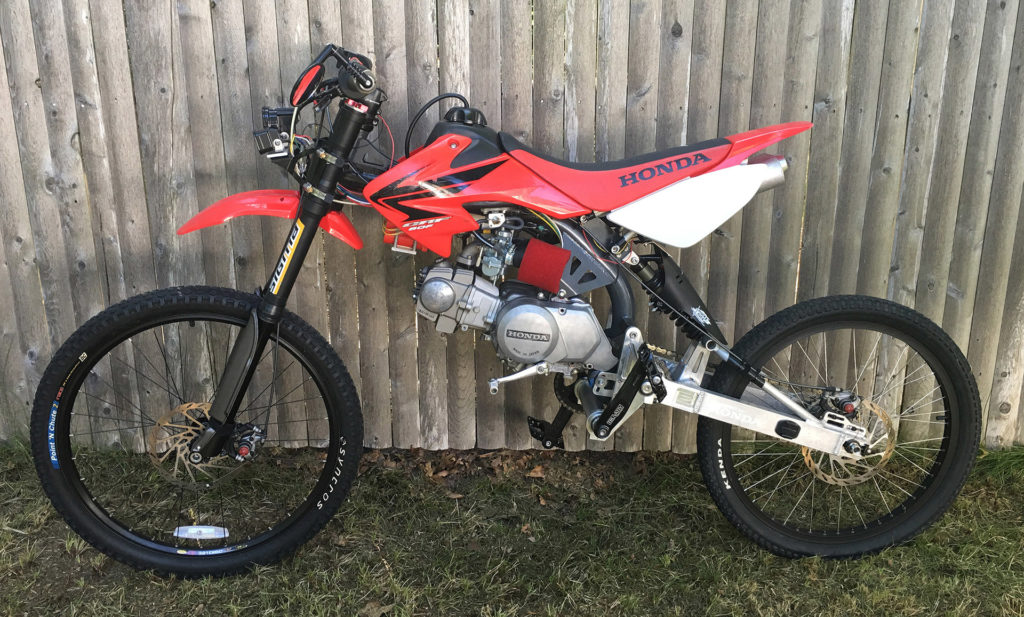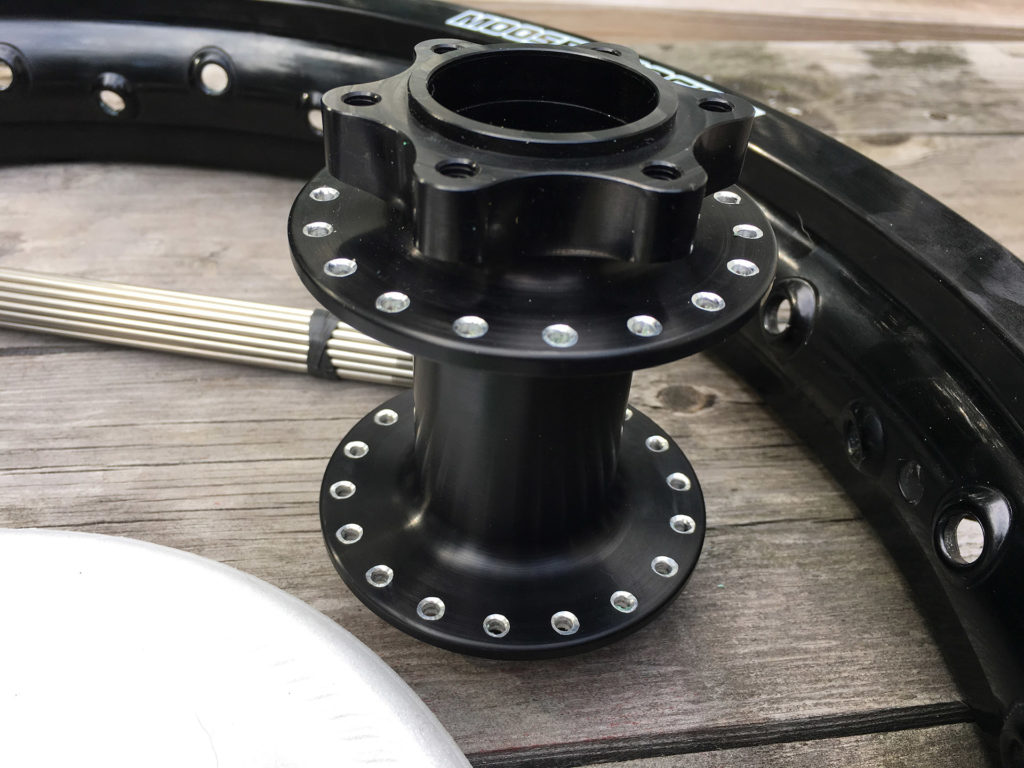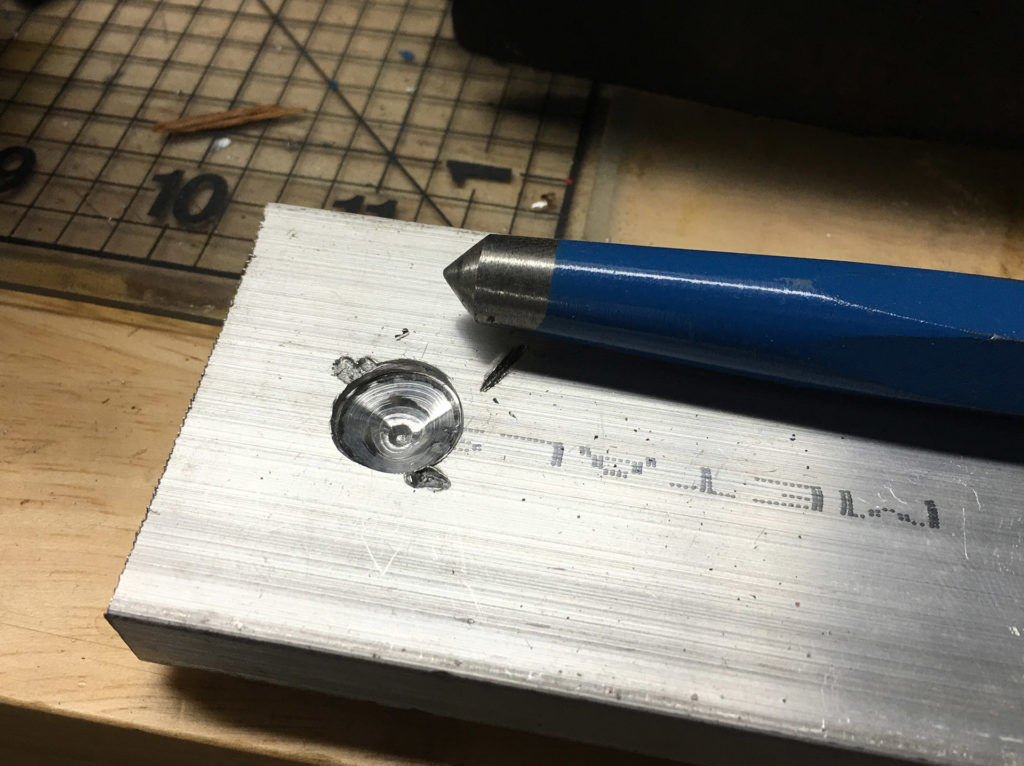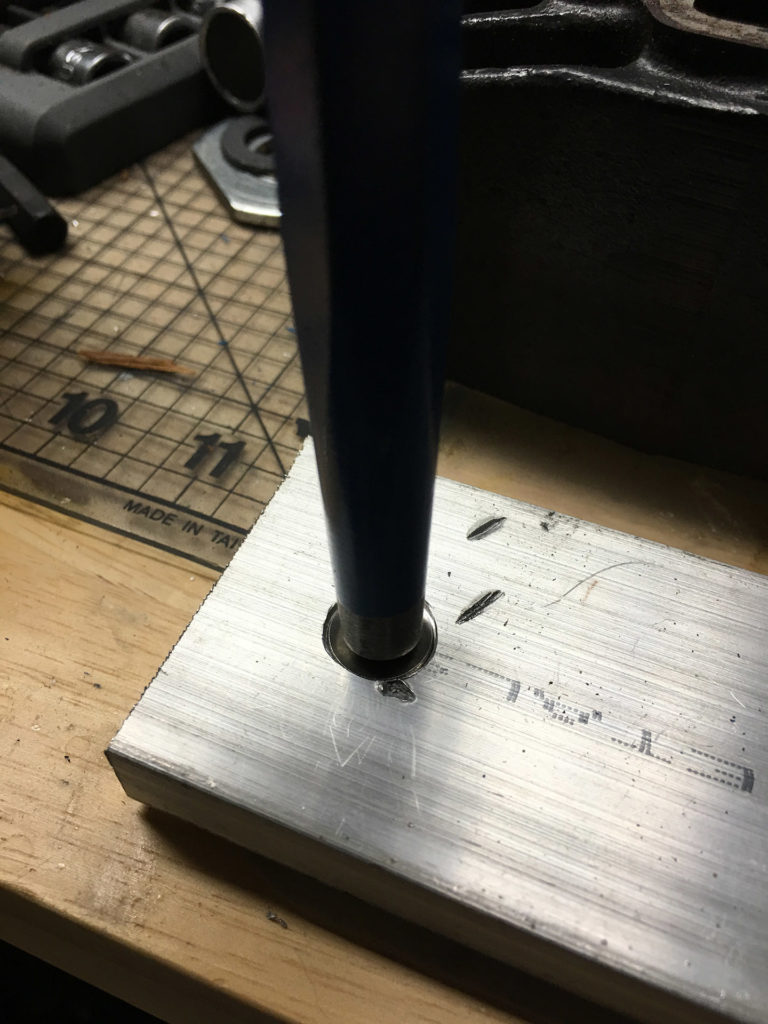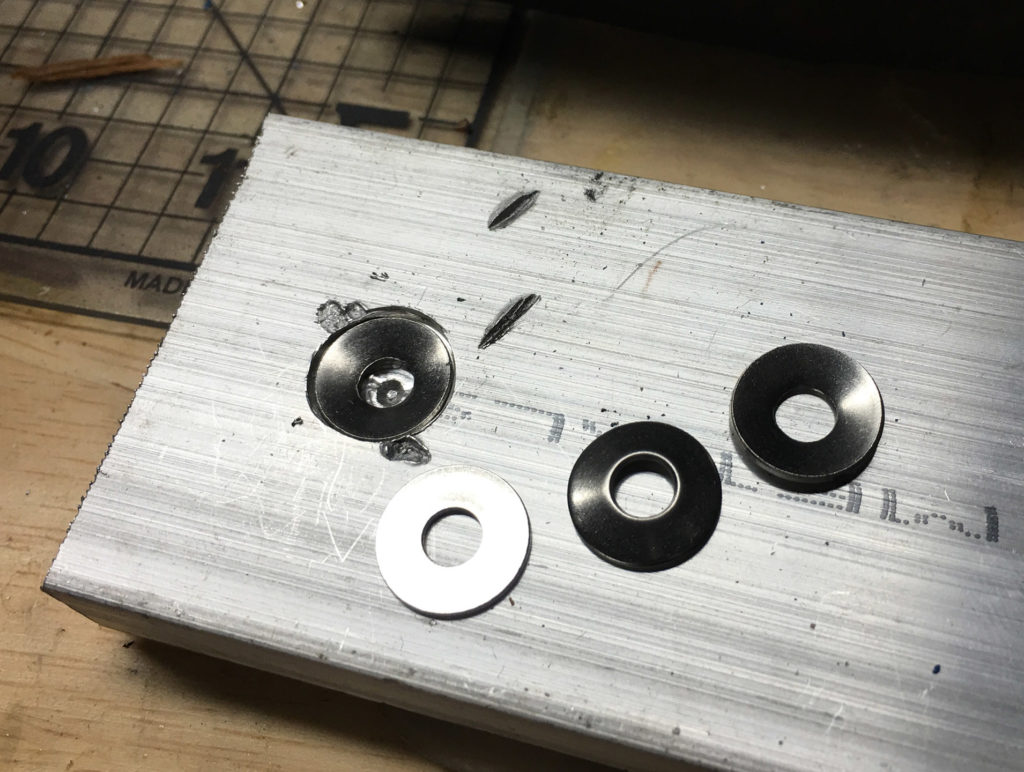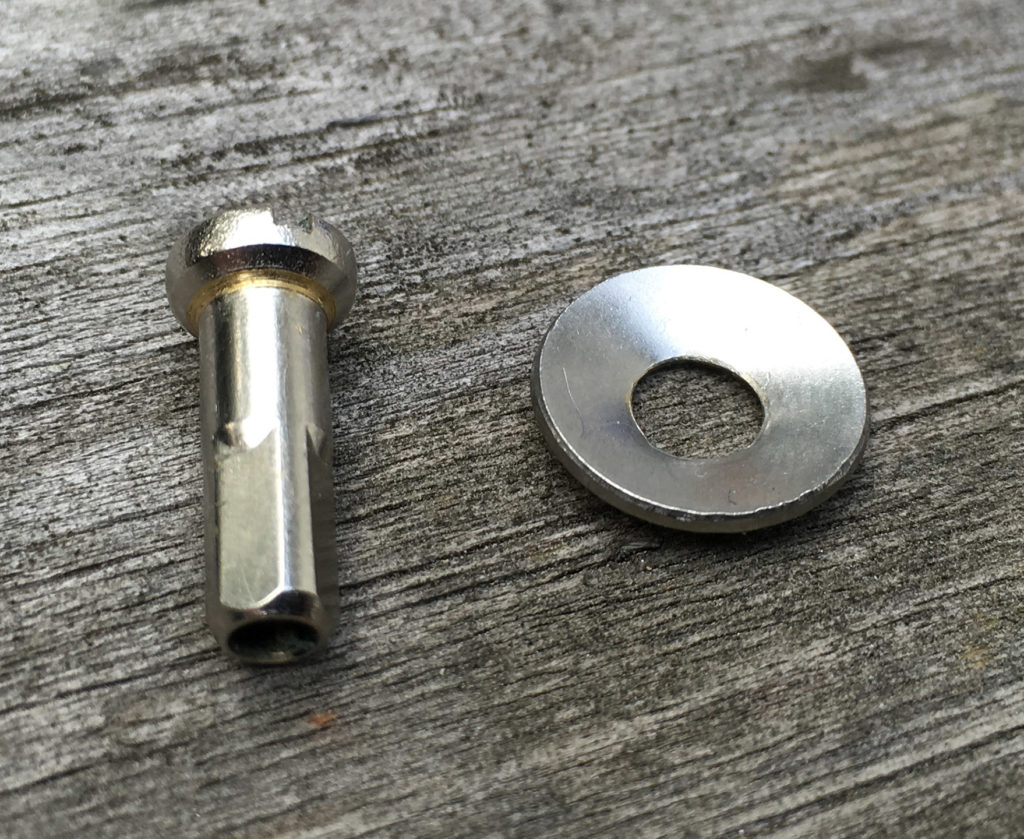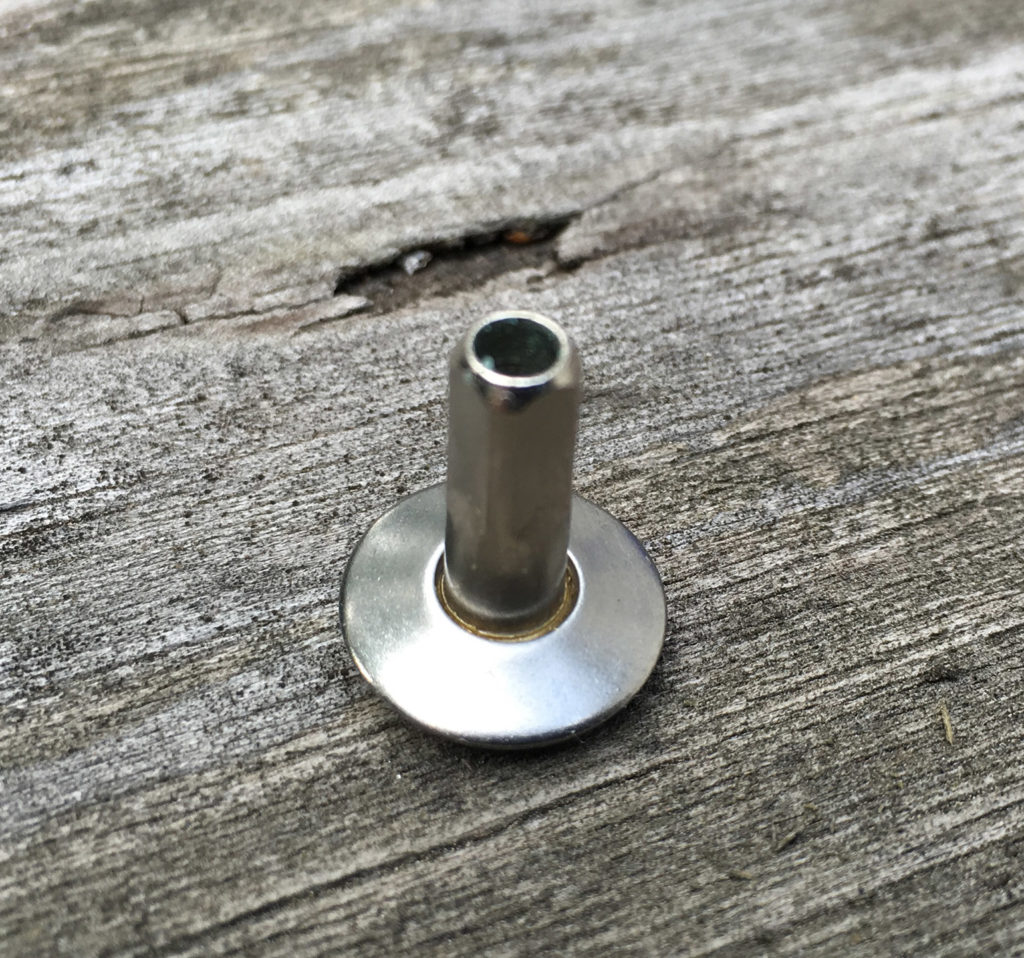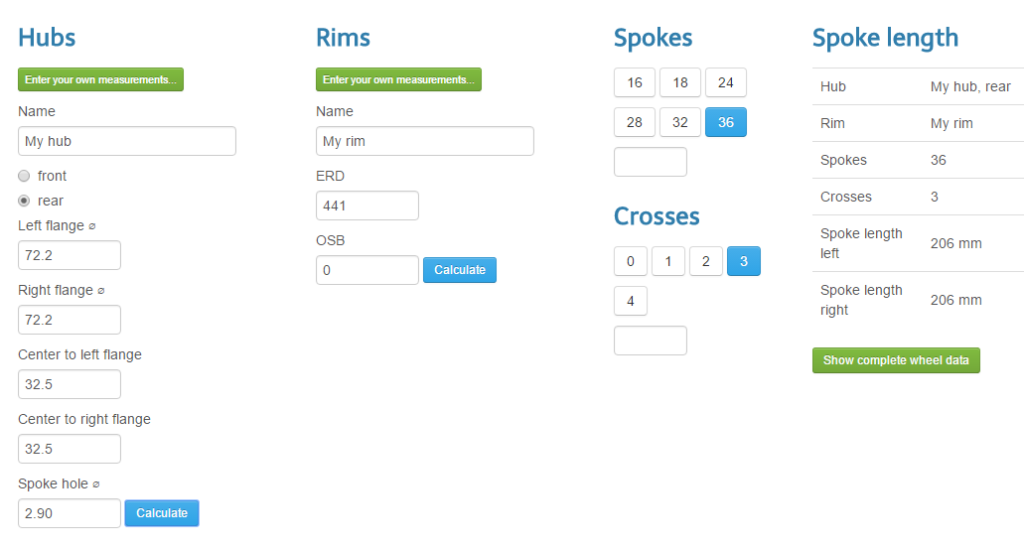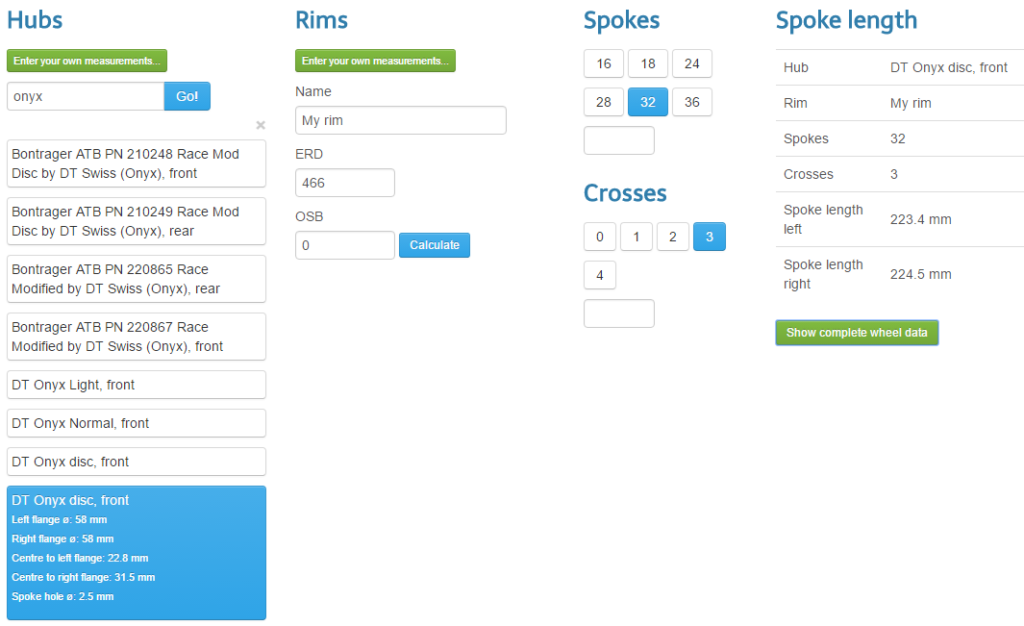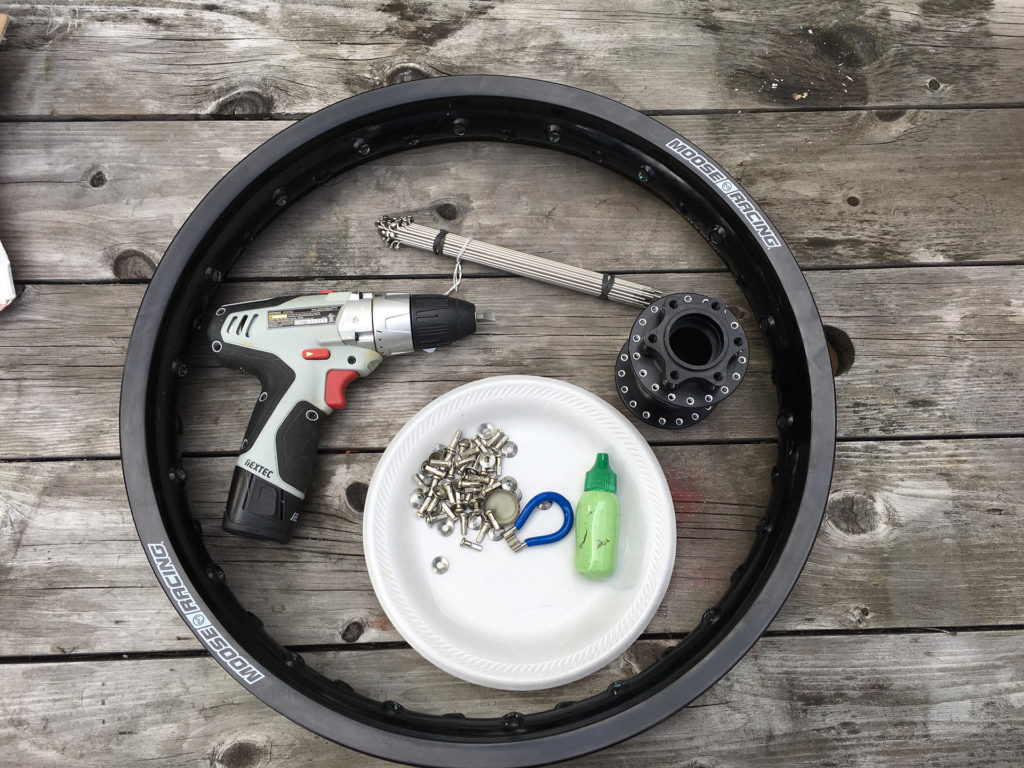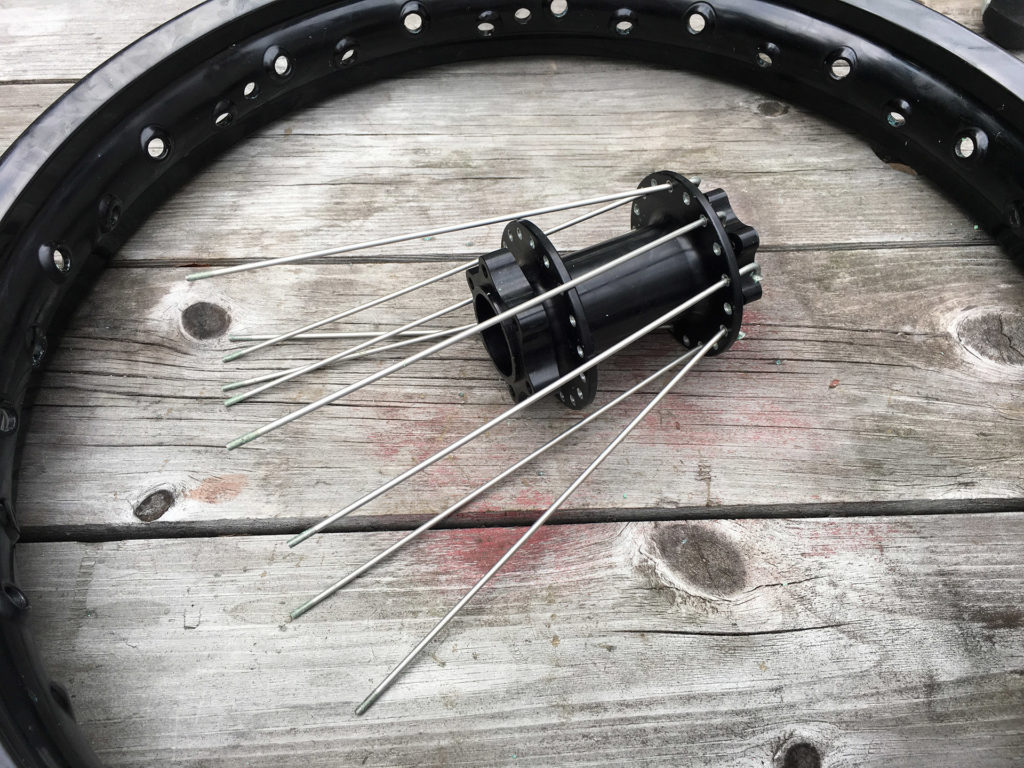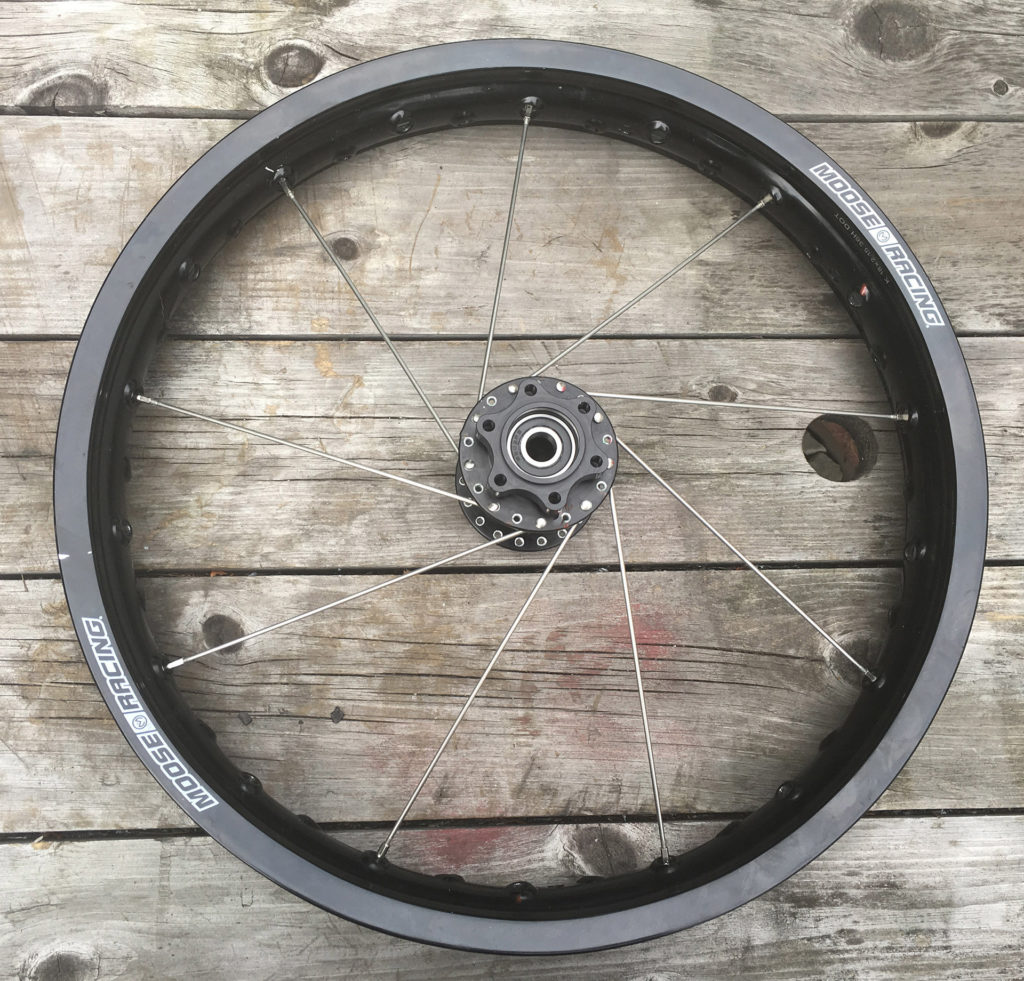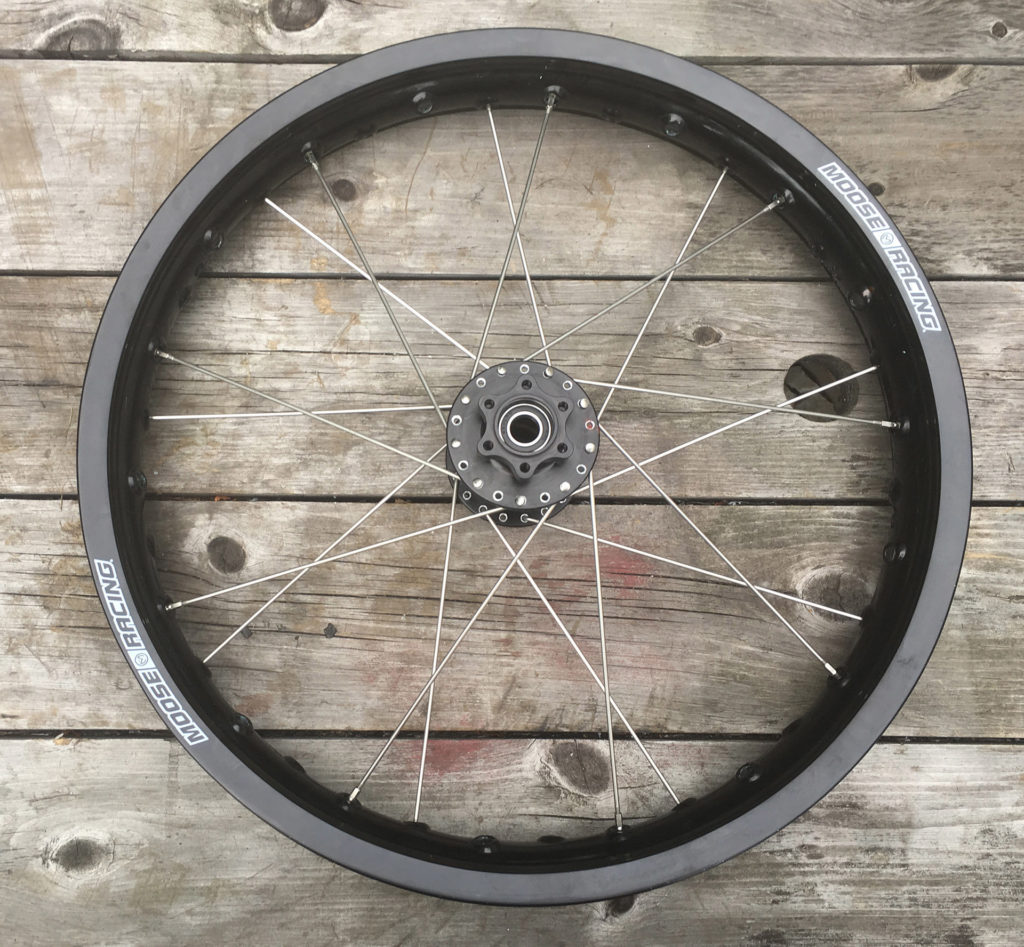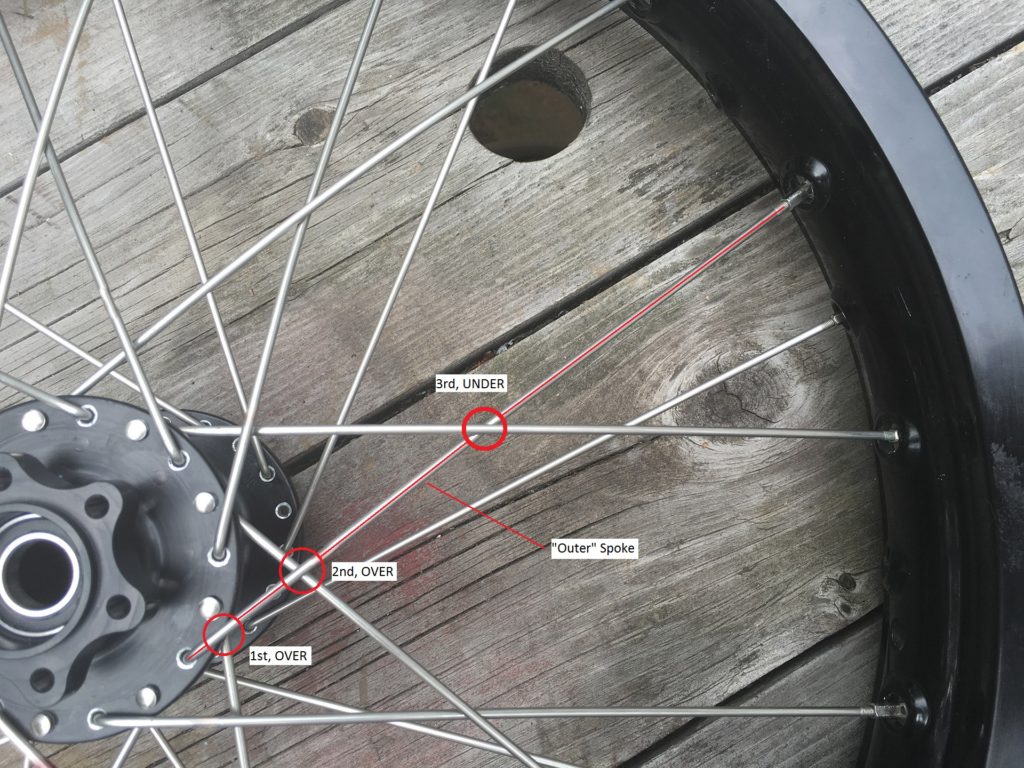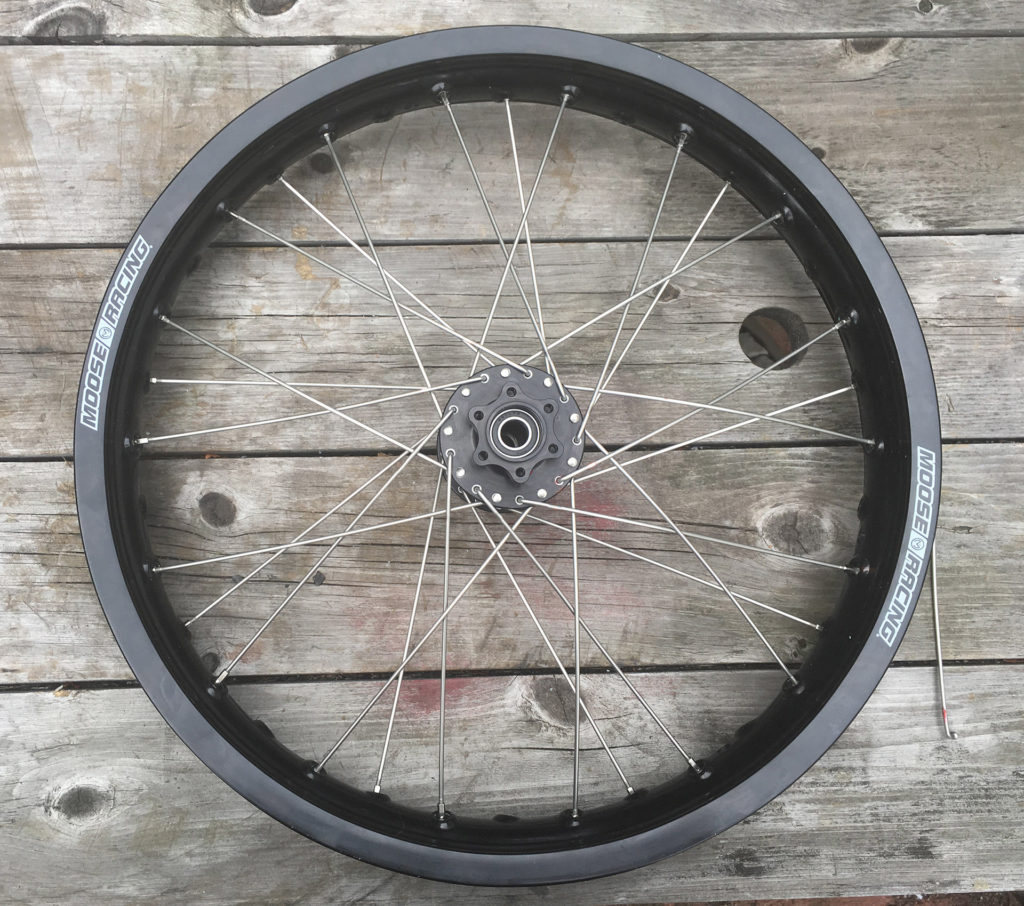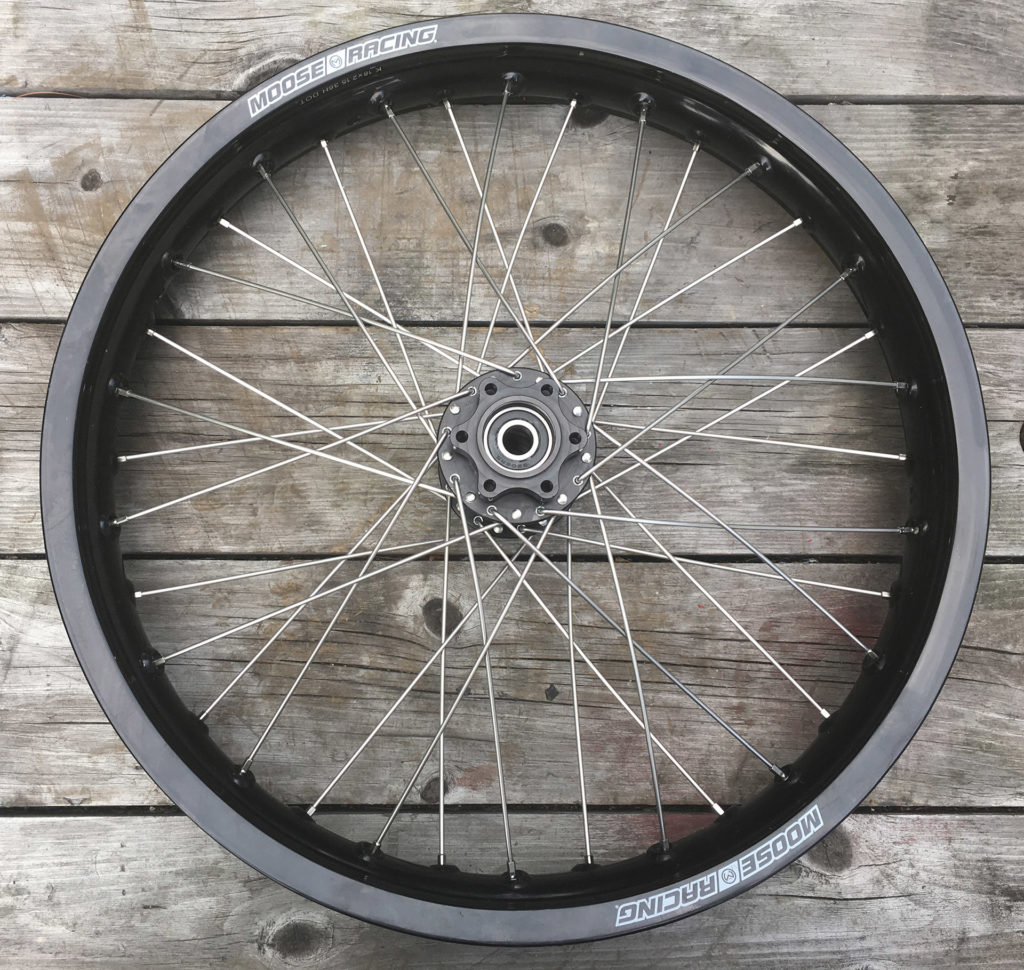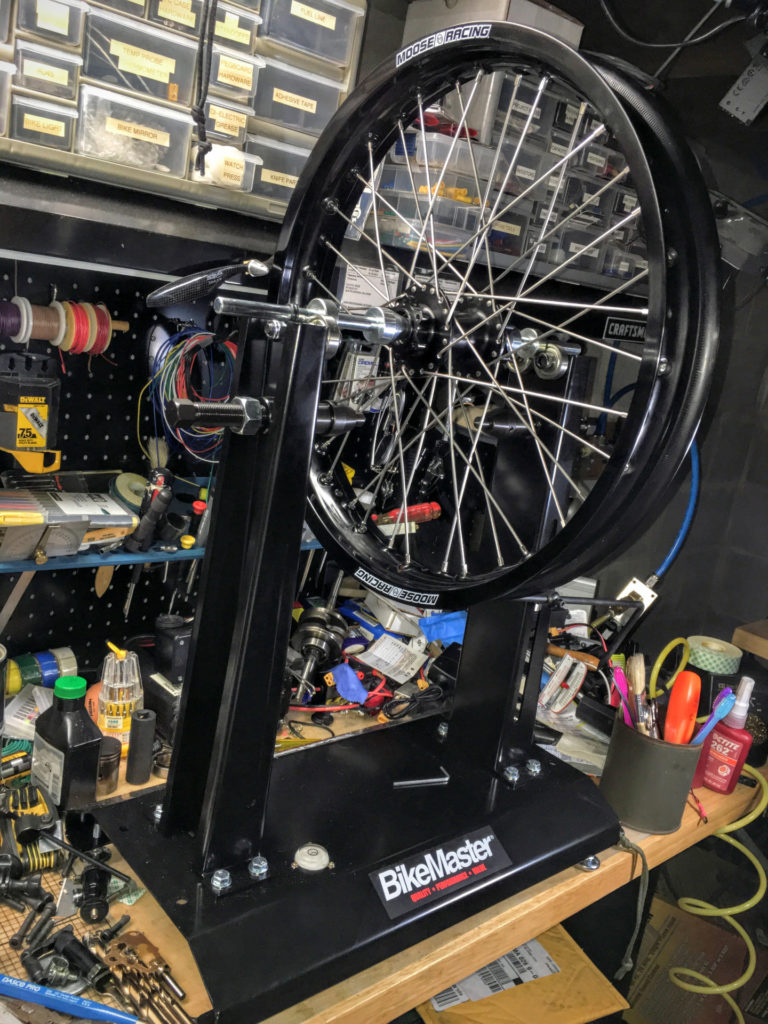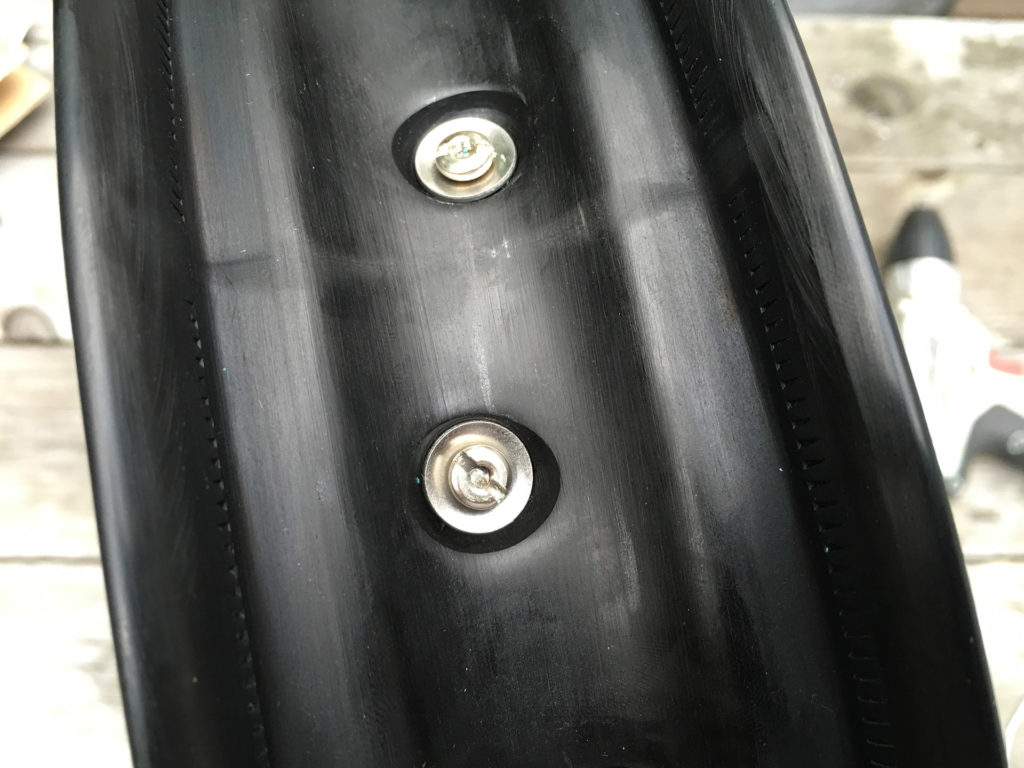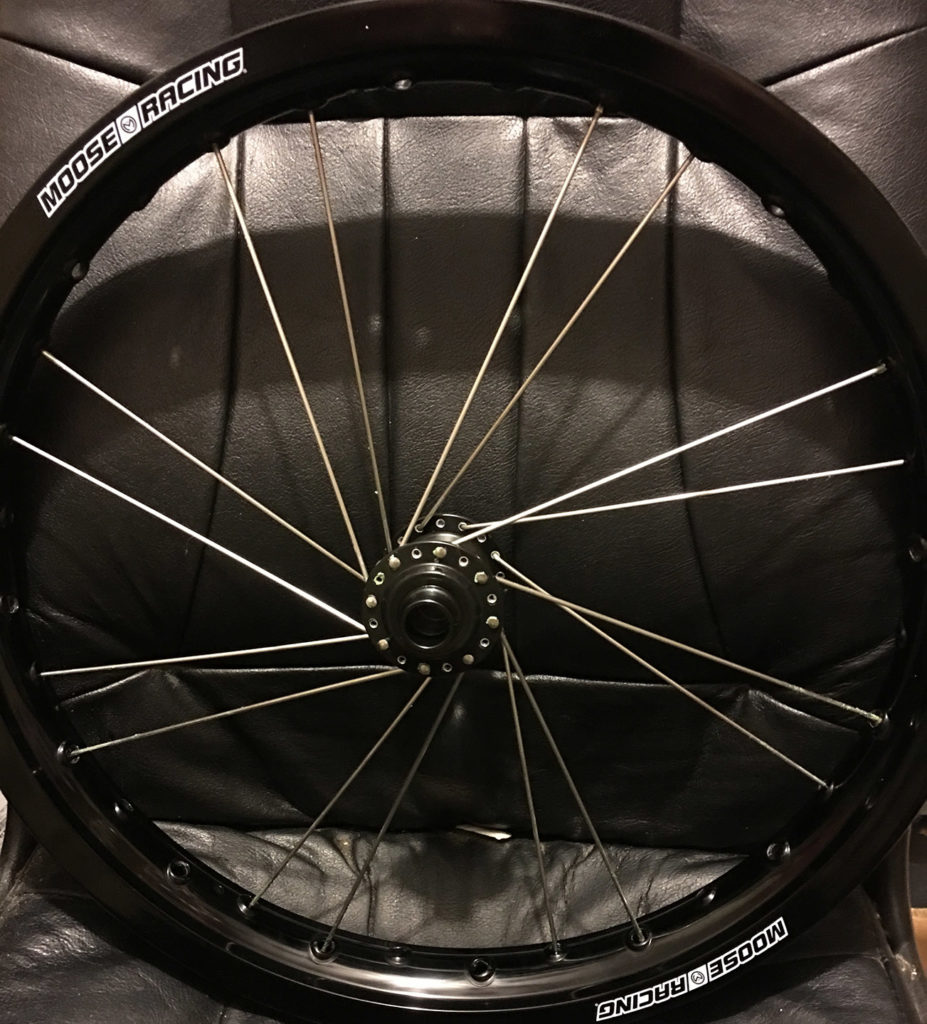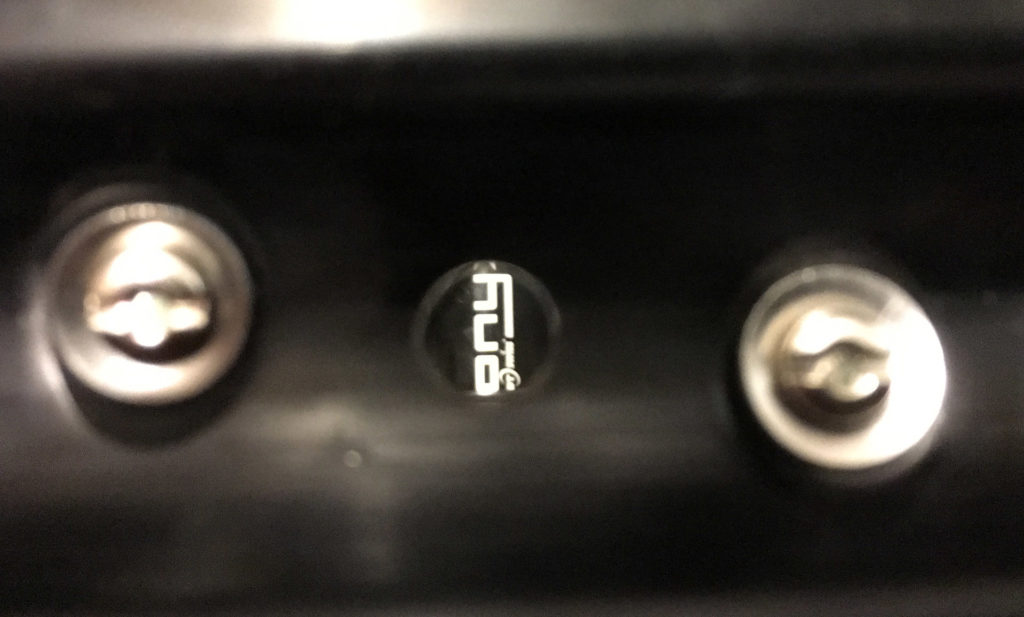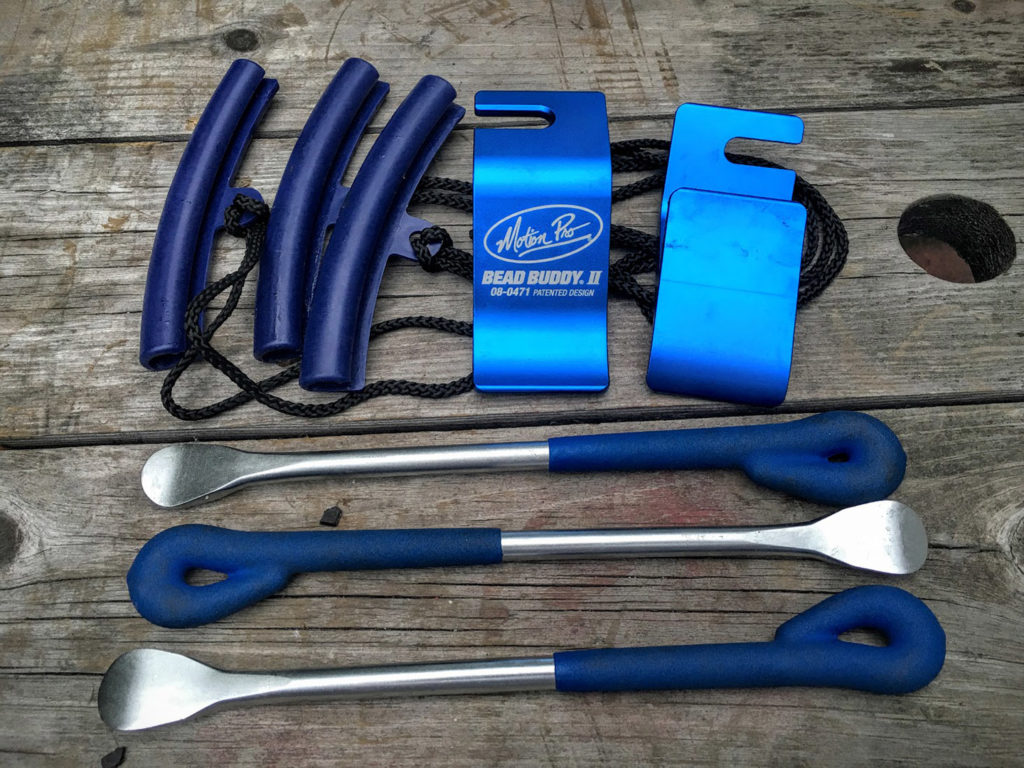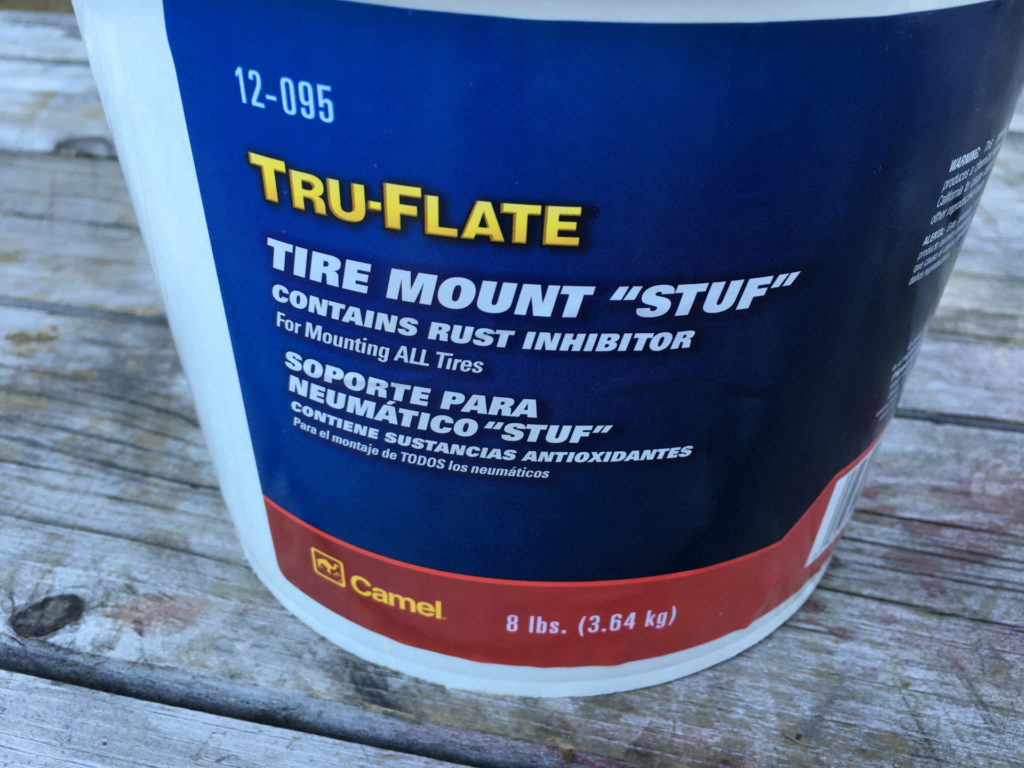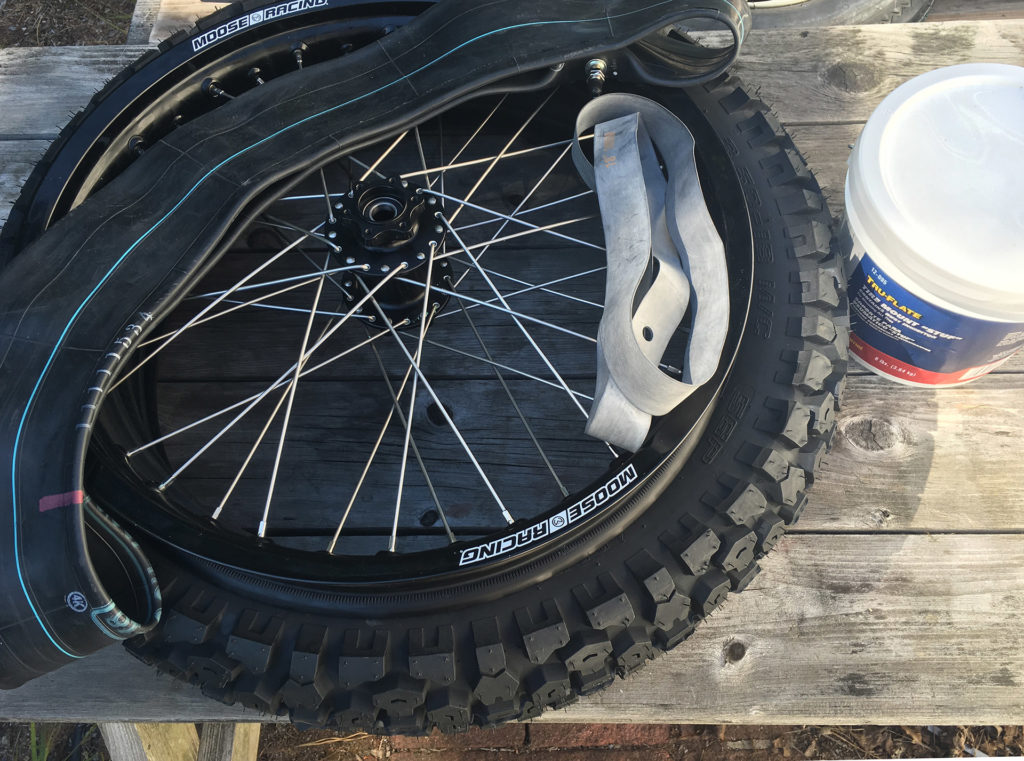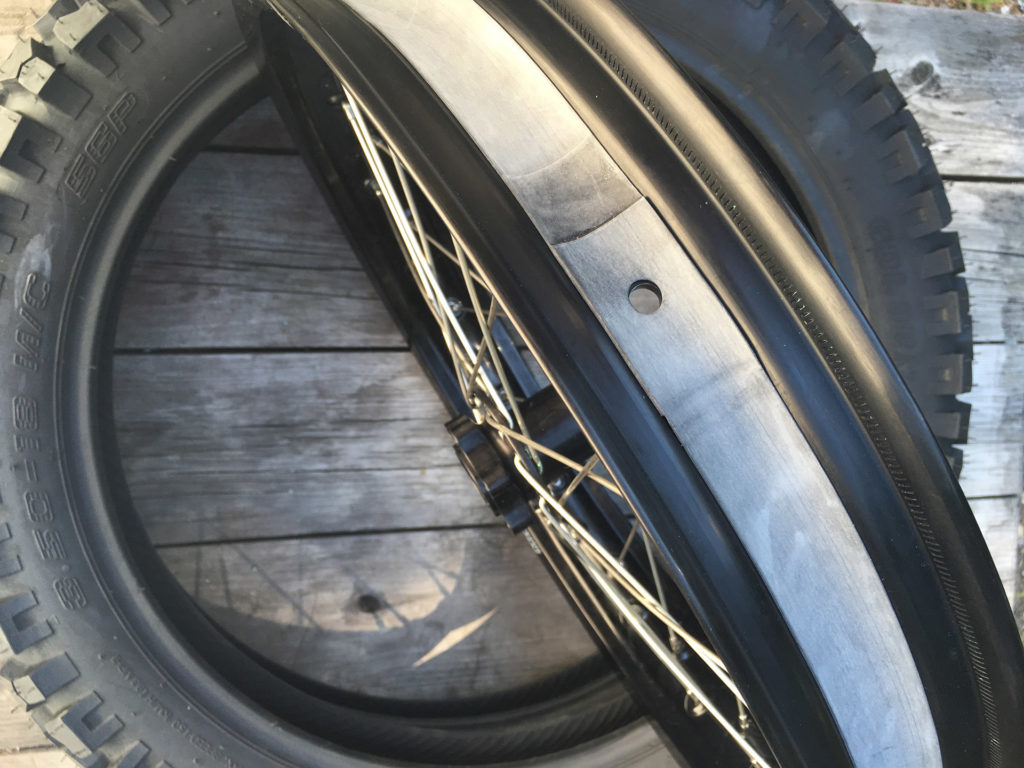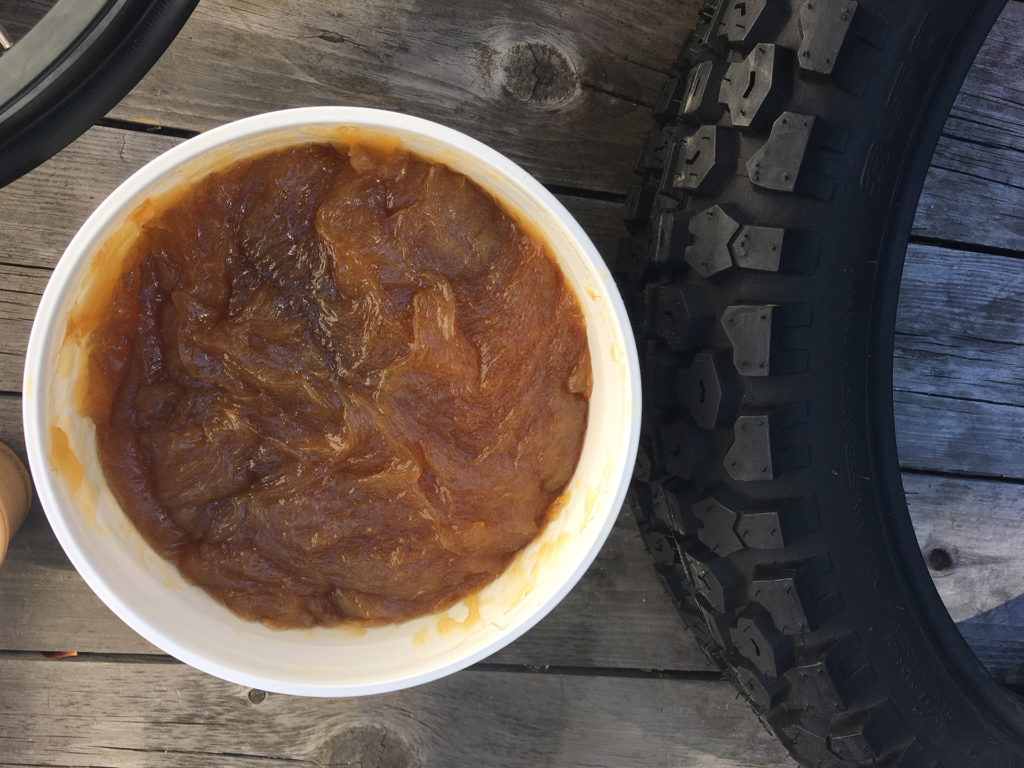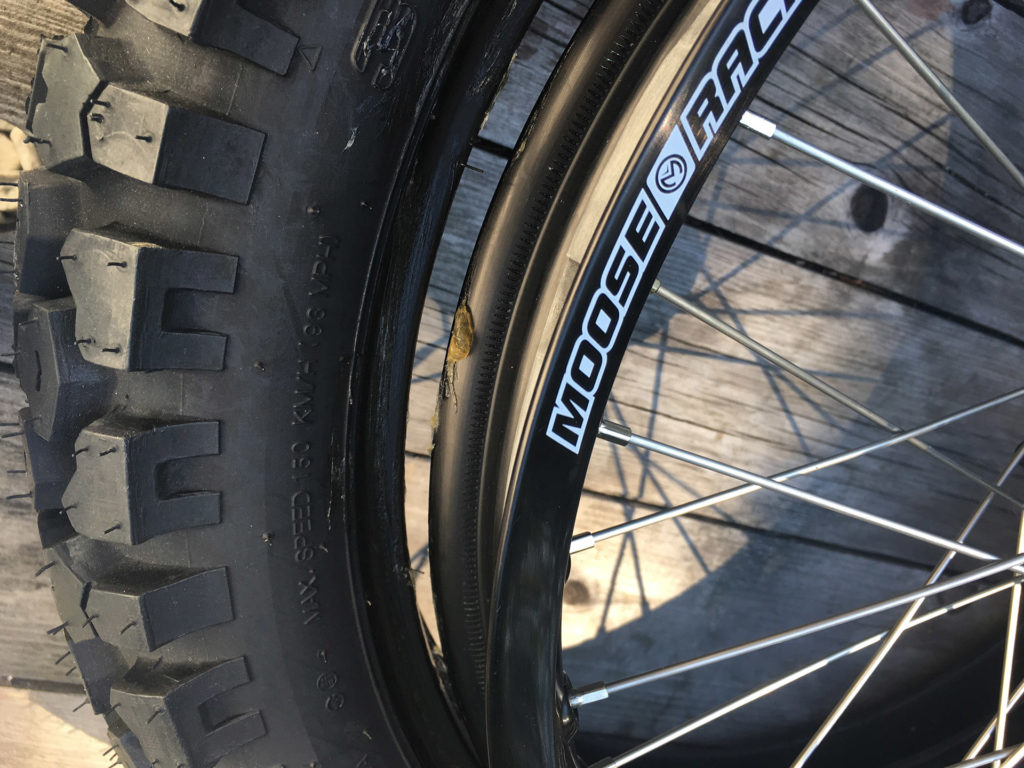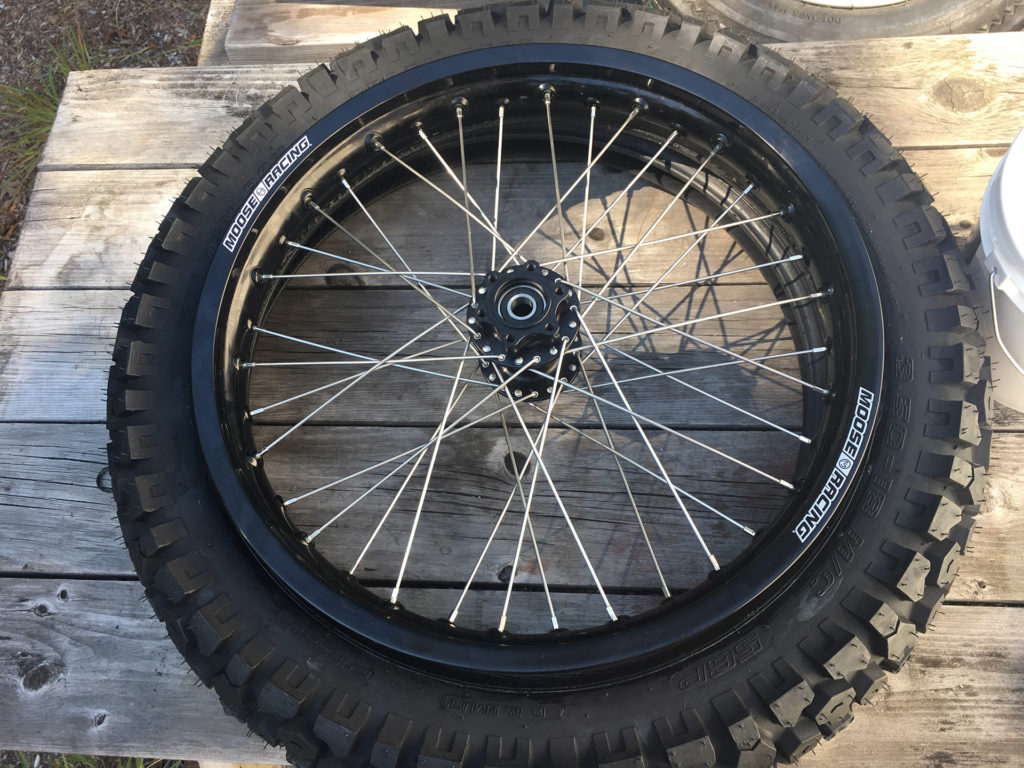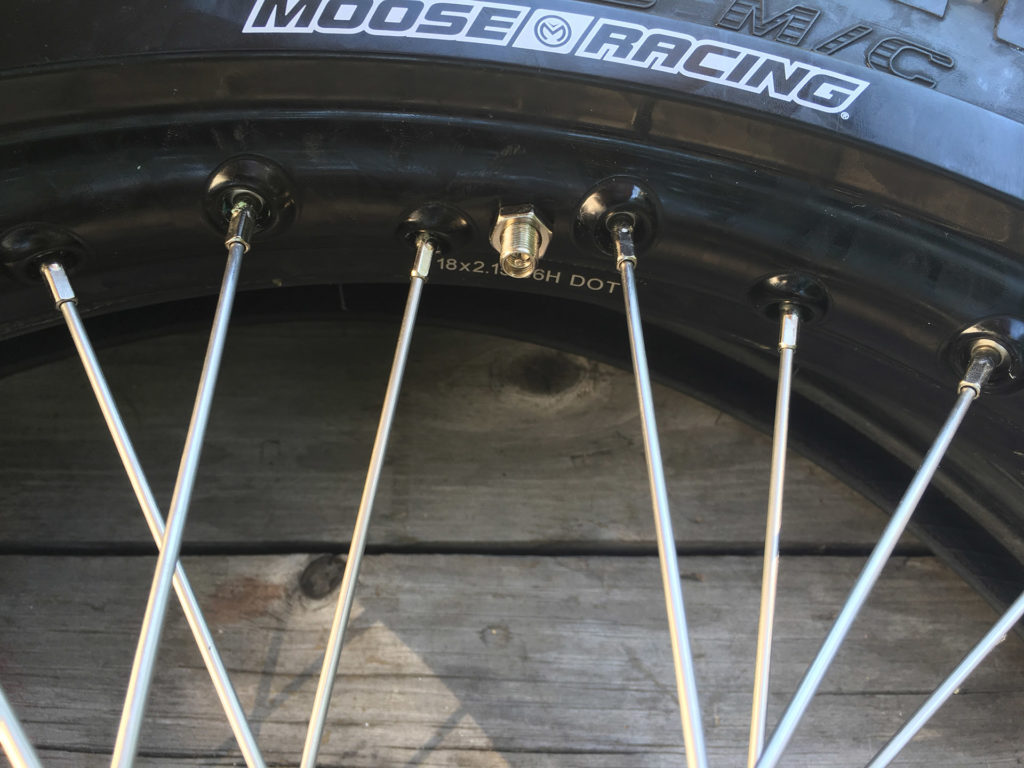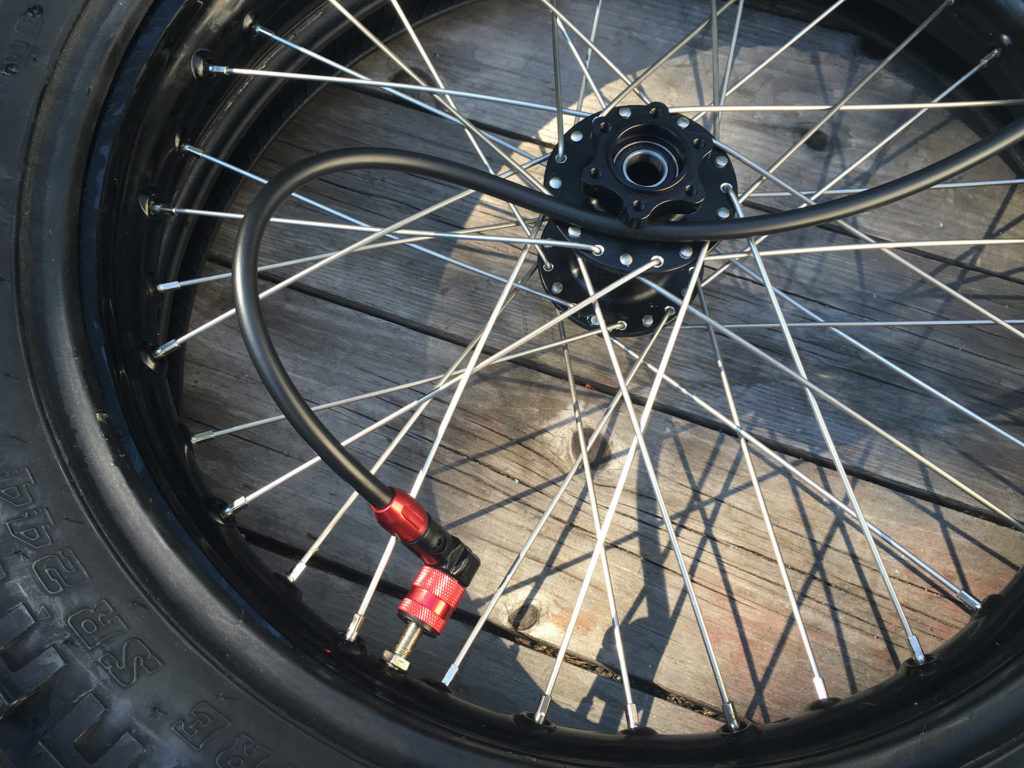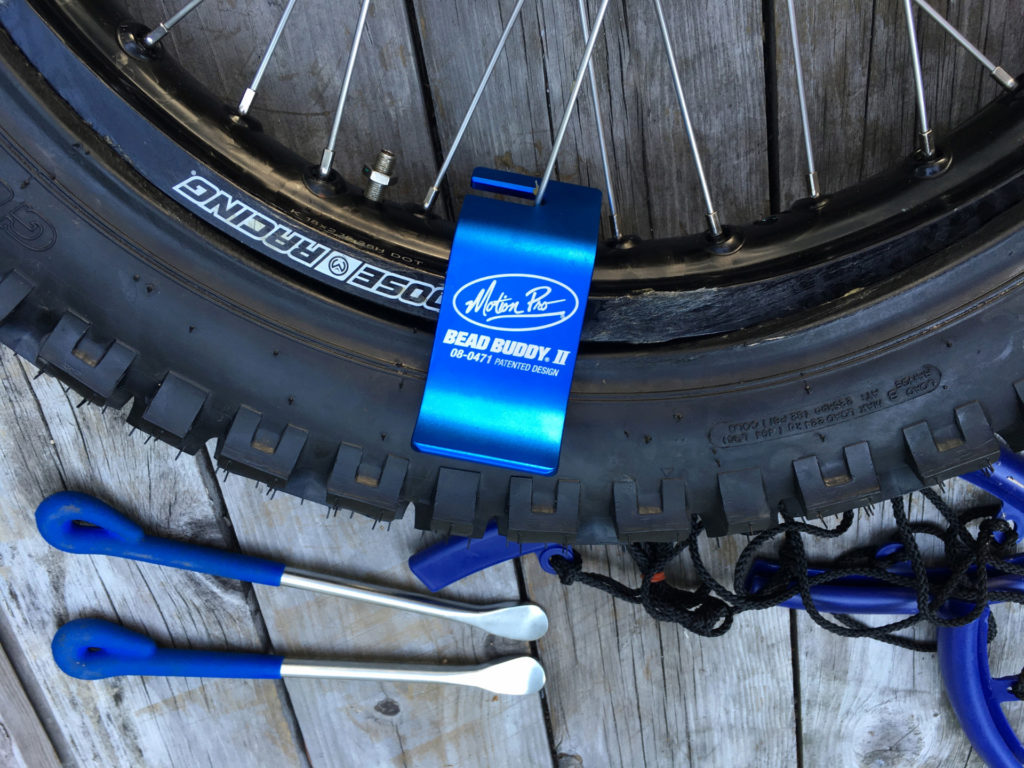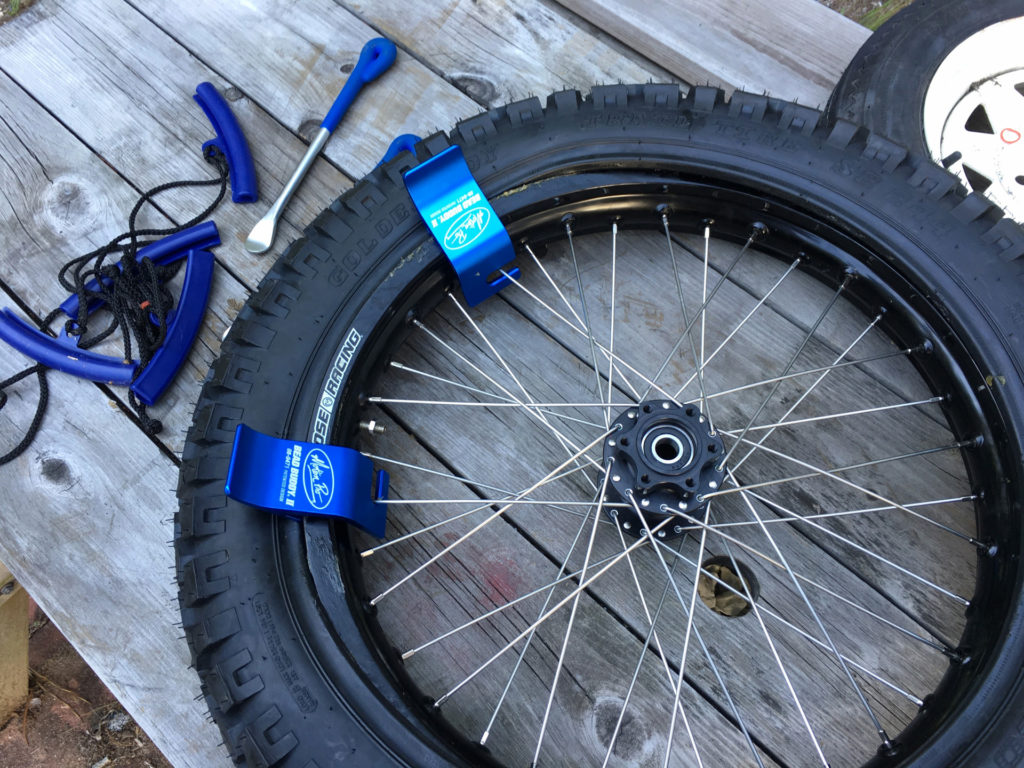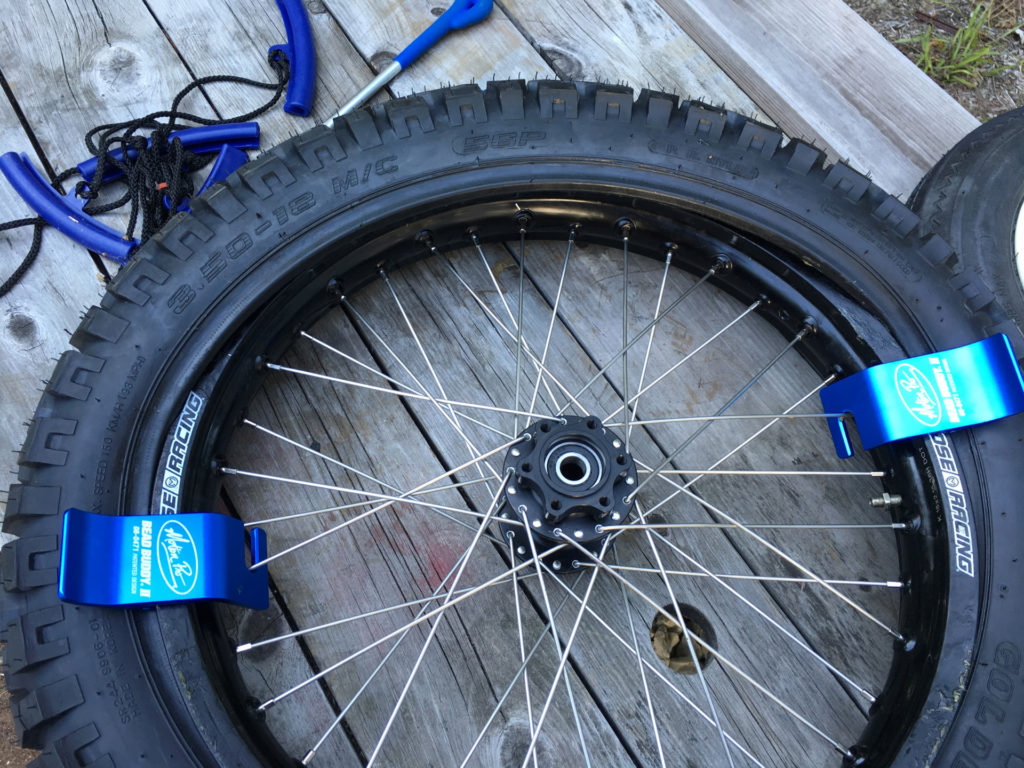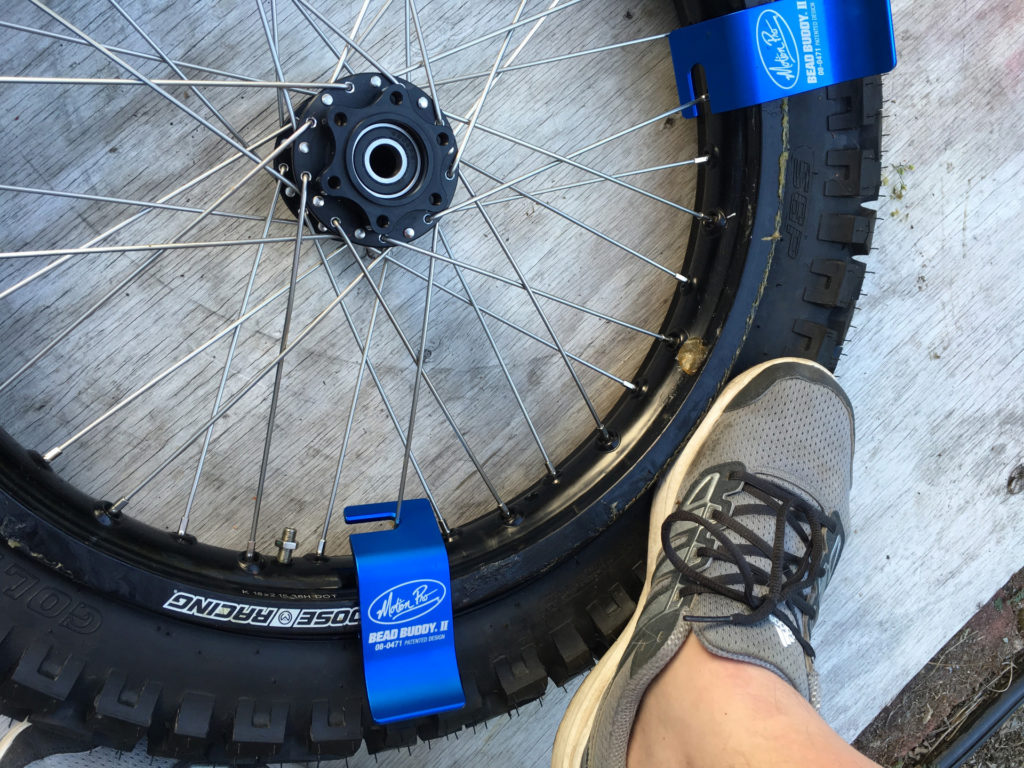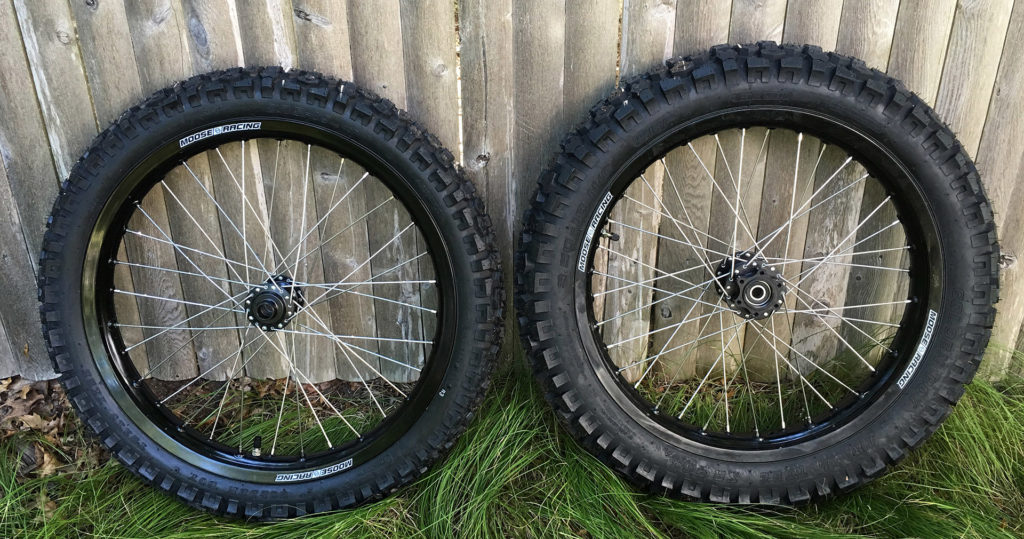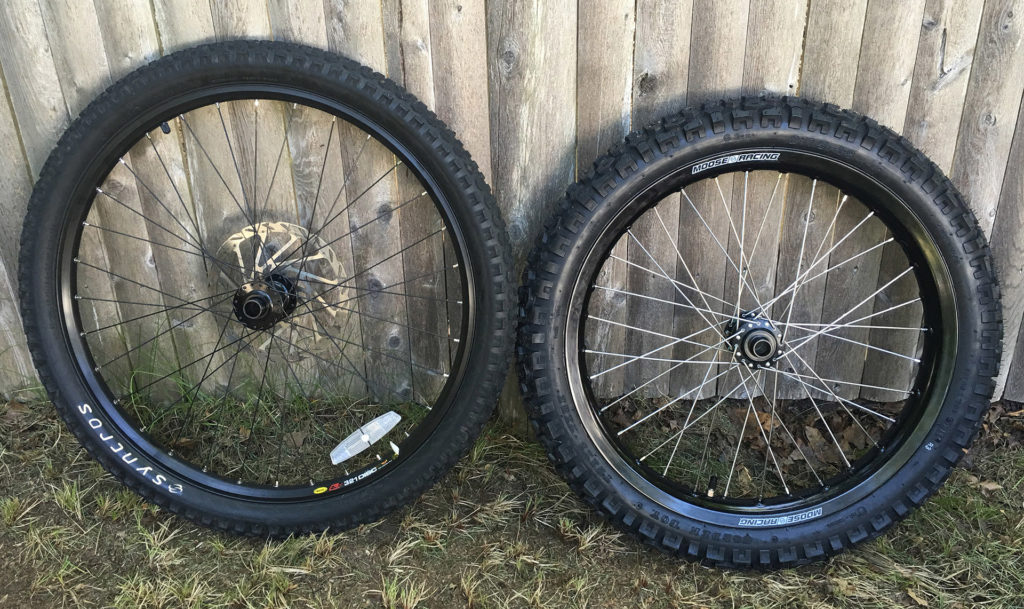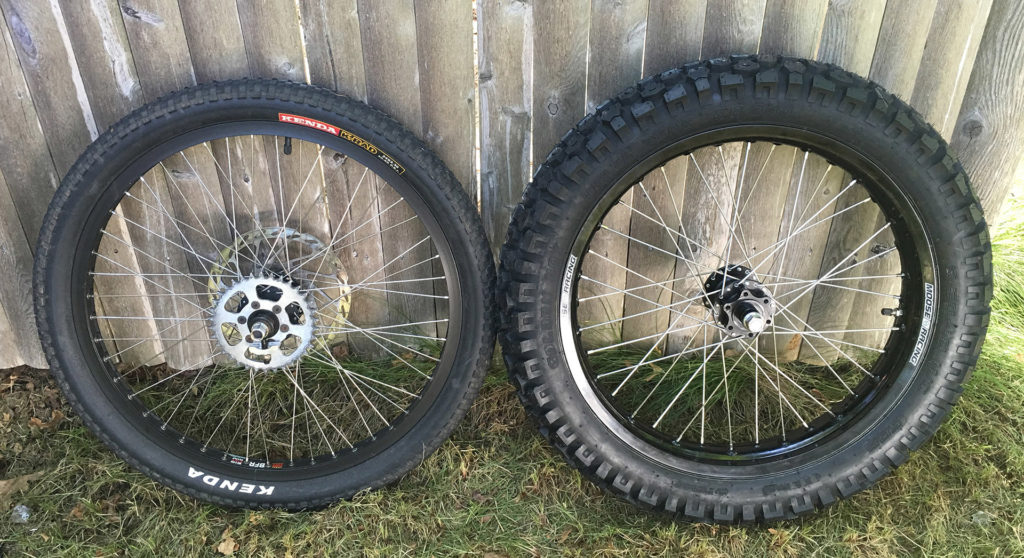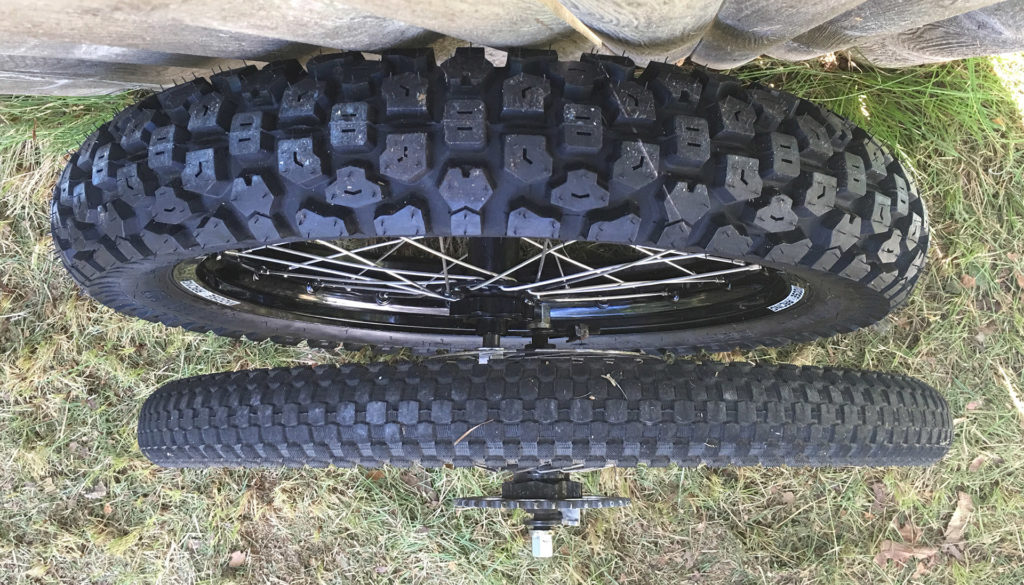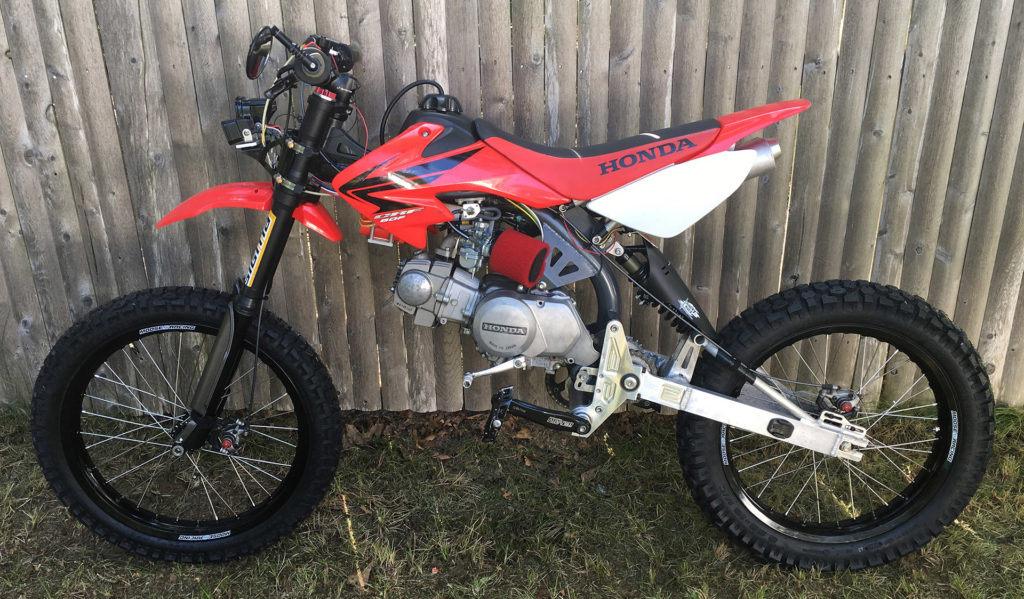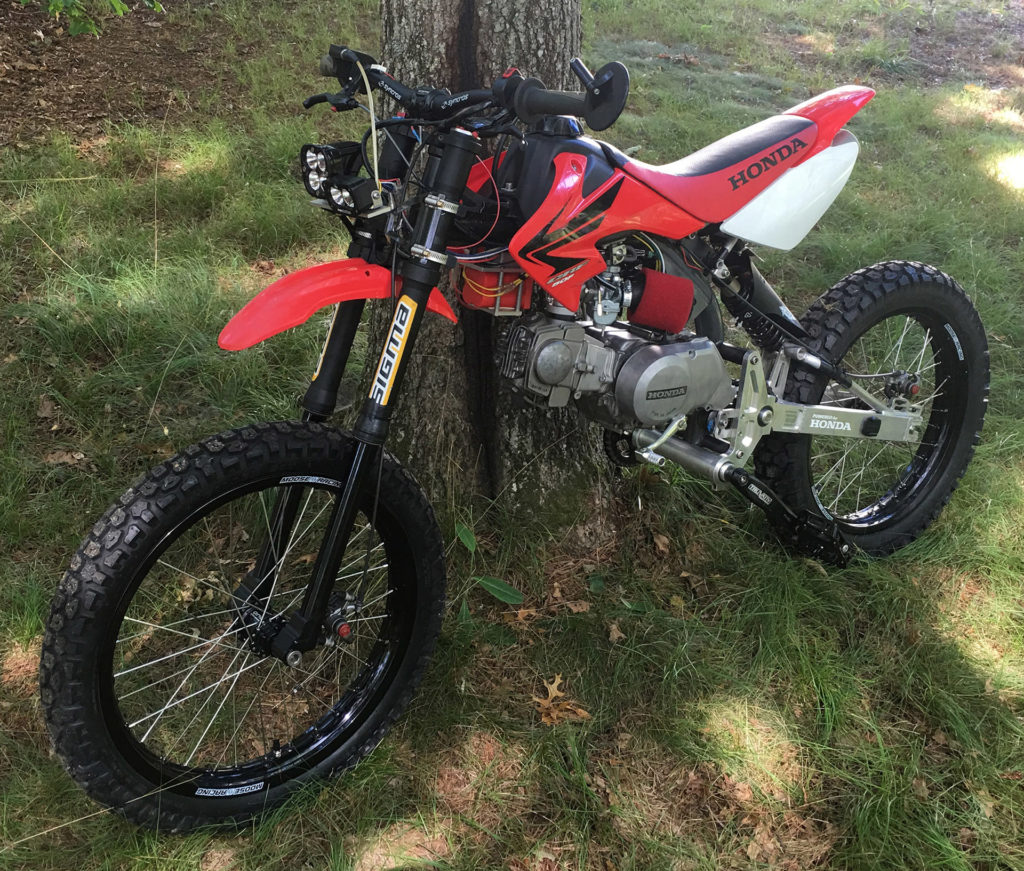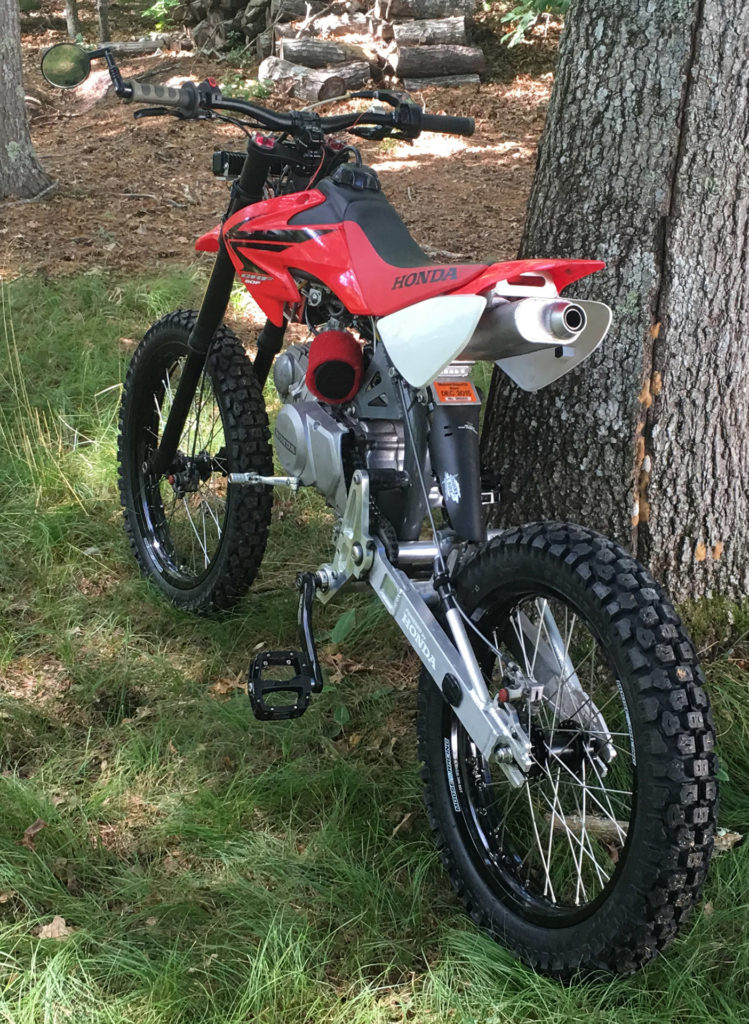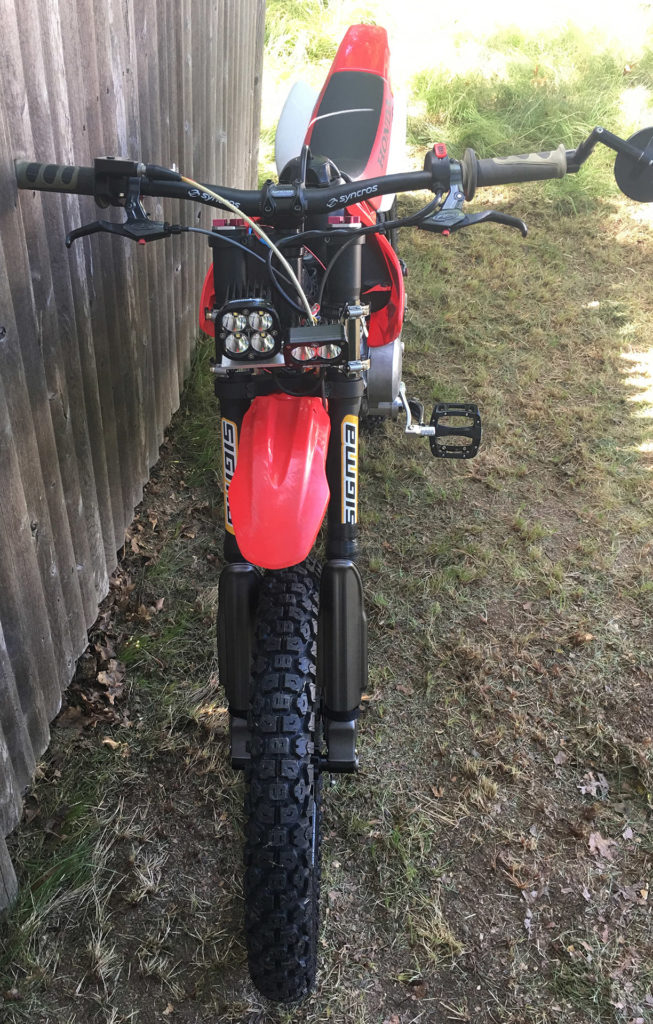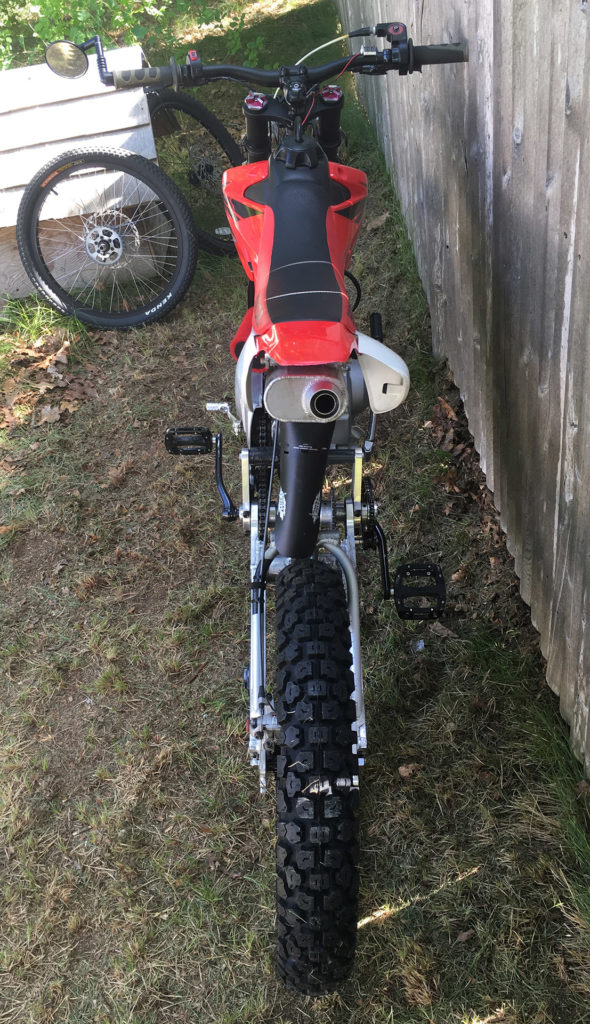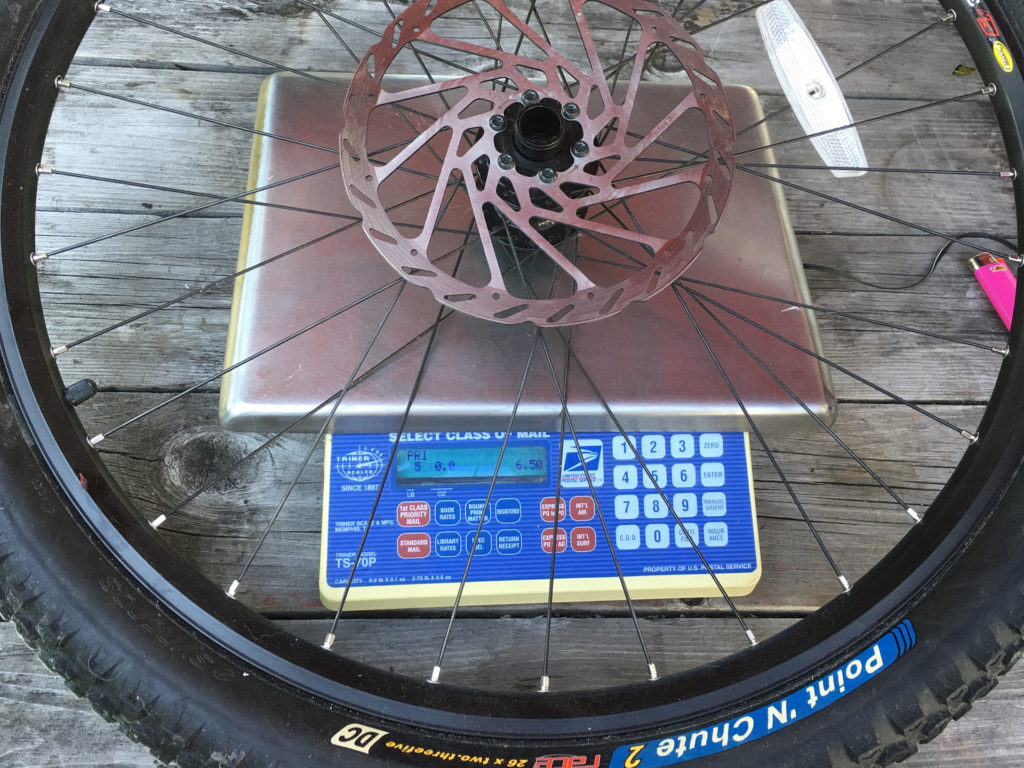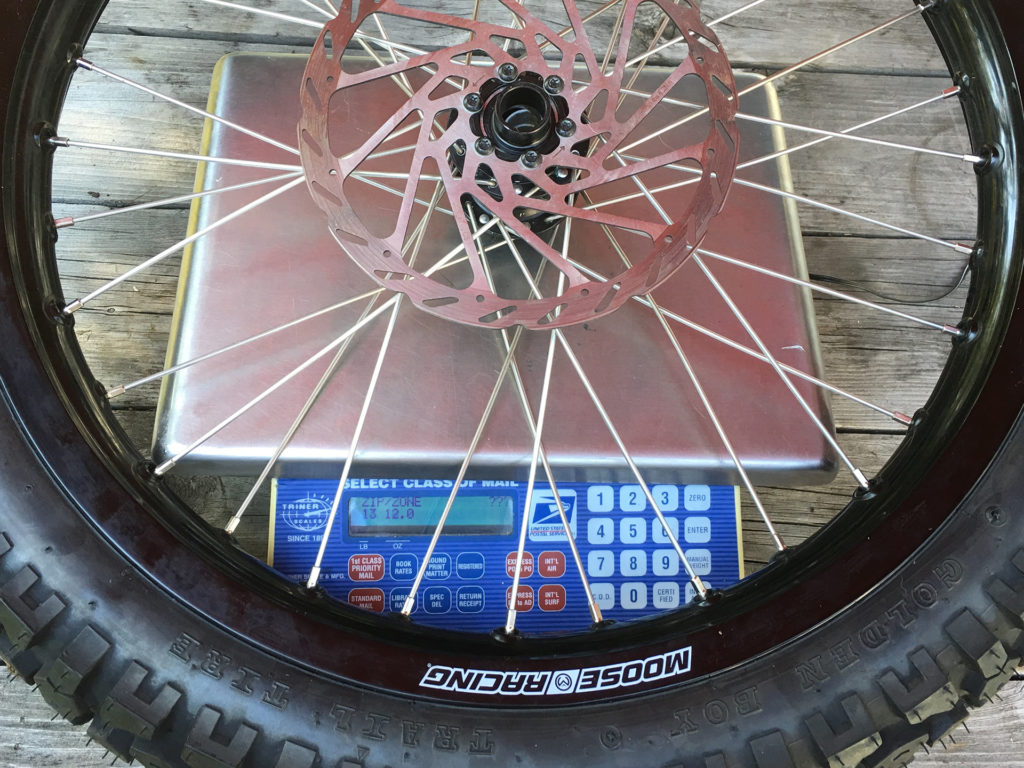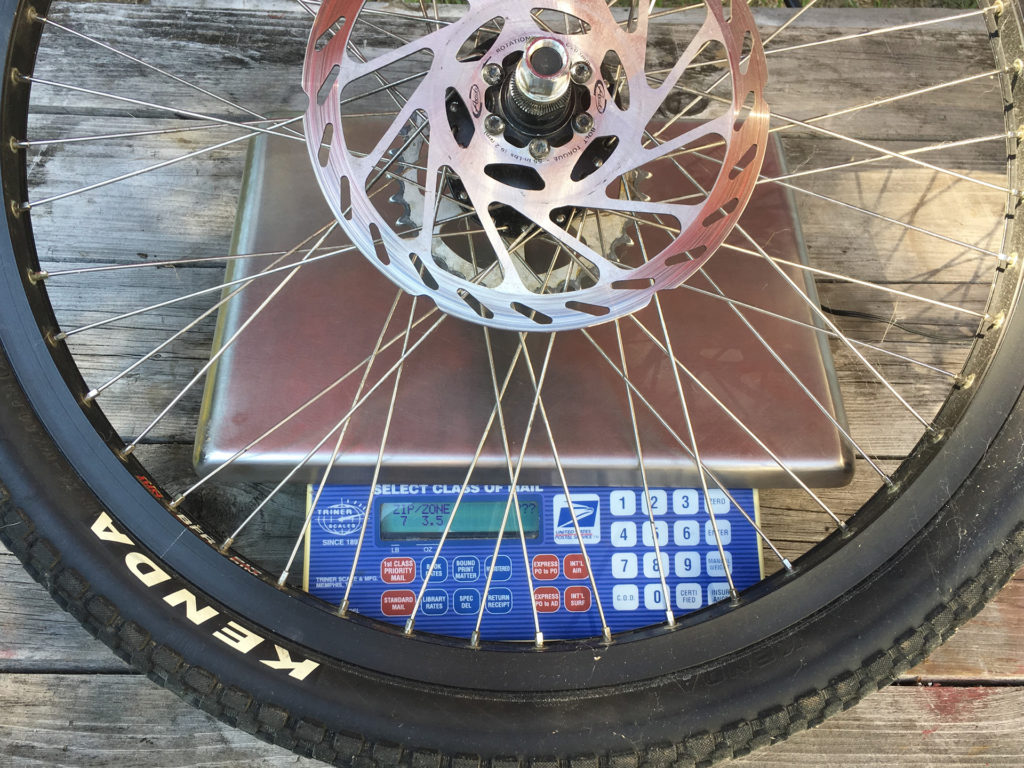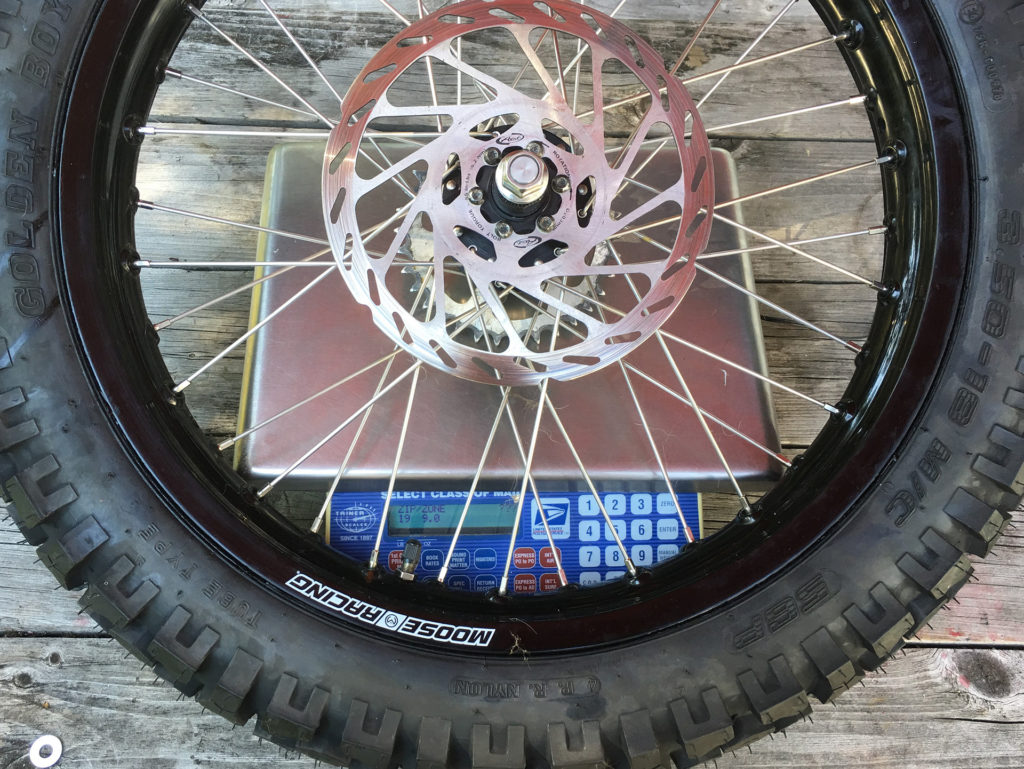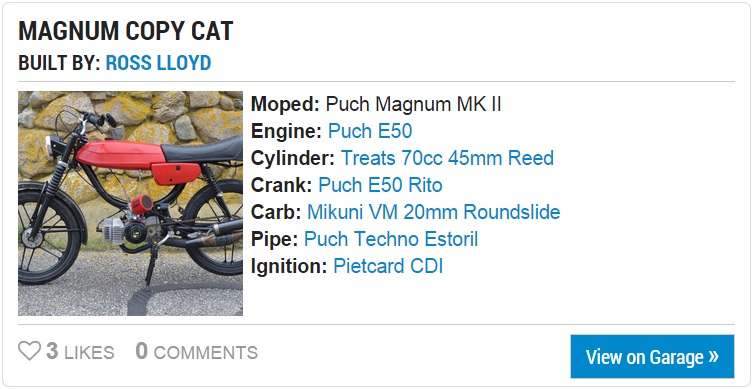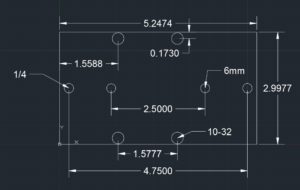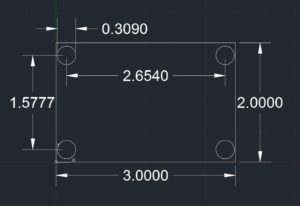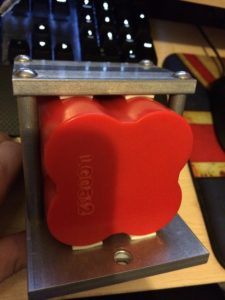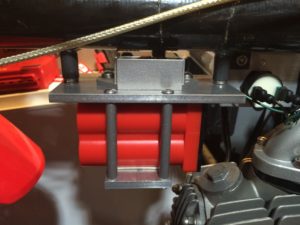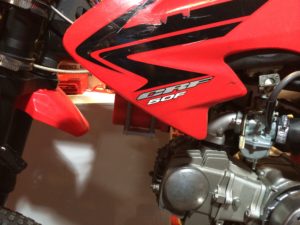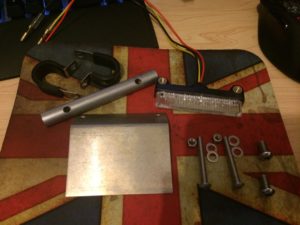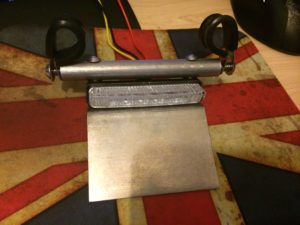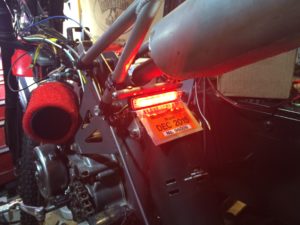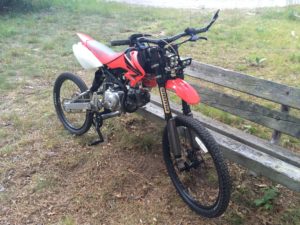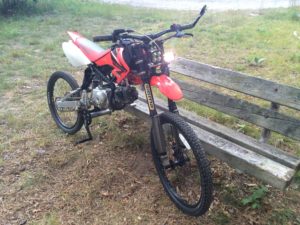TL;DR –
Front –
- Sapim Leader 12G Spokes 16×223/16x224mm – $17.60
- DT Swiss Onyx 32H 20mm Thru Axle 6 Bolt Disc Front Hub – $36
- Moose Racing H 19×1.85 32H DOT (0210-0197) – $119
- Shinko 244 2.75-19 – $35.88
Rear –
- Sapim Leader 12G 36x206mm Spokes – $26.40
- Pirate Cycles Universal Hub (included a front, not used) – $250
- Moose Racing K 18×2.15 36H DOT (0210-0203) – $119
- Shinko 244 3.50-18 – $46.88
Misc –
- Washers (McMaster) – No. 8 Regular 0.188″ ID 0.500″ OD 92217A435 – $9.34×3 $28.03
- Sapim Leader 16mm Nipples – $24.00
- Misc Tube’s/Rim Strips – $25
I can’t link direct to the product on most of the above because I purchased on eBay, but here are the link’s to the seller’s I dealt with who had good prices and fast shipping
- Rim’s from perf-moto
- Spoke’s and Nipples were purchased from YoJimbo’s Garage (VERY good service)
- Tire’s from Chaparral Motosports
Total cost, if you use the Hub’s that came with your bike (why I didn’t is explained below) is –
- $441.79
And if you have some time on your hand’s and don’t mind poor quality writing –
DOT wheel’s on the Motoped
(Work in progress as I upload more photo’s and notice mistakes etc)
This is my Motoped right now. The bike, like this post is also somewhat a work in progress, but other than some small stuff I want to change I’m perfectly happy with it… Except the MTB tires.
Issue’s I have with them in order of importance (to me)
- Rapid wear (rear tire, front lasts just fine)
- Limited choice of 24″ tires
- Sinking into Sand
- Flats
- Concern about failure due to higher speed and weight of Motoped Vs MTB
First of all – I’m not a wheel builder. The rear wheel for this Motoped was the first and last wheel that I’ve ever built. I have an original pre-Kickstarter frame kit I bought from Cam in 2010. The kit came with a 48h hub (h=hole, number of spoke holes) and I laced it to a Sun-Ringle BFG BMX rim. I’ve never had an issue with it in the 5+ year’s I’ve had the Motoped, but I made mistake’s such as the spokes being a little too long and the drive side’s outer spokes weren’t trailing (I’ll post links later for what that actually means).
I have a 48 hole hub and inexpensive rim’s generally come in 32 or 36 hole. I’d rather not custom order a 48h rim or modify my probably unable to replace original hub. Motoped sell the current version hub’s for $139, but are out of stock. Luckily Pirate Cycles offer an aftermarket hub that as far as I can tell has the same dimension’s
Here it is after I drilled out the holes to 2.8mm and added a countersink.
I drilled because the spokes I’m using (12G Sapim Leader) went through from the outside fine, but getting them through from the inside was much too tight due to the insertion angle causing the threads to catch on the side, only removed 0.02mm. The countersink was because the shoulder width on my spokes required one to seat properly – the Hub’s Flange’s are probably much wider than what people would generally use 12G spokes with. Just used another larger drill bit for that as my countersink bit is pretty wide and the Disc rotor and sprocket mount’s got in the way.
I’d recommend just waiting till you order spokes before modifying any hub’s – You might not need to do what I did.
The rims I’m using are from Moose Racing, as far as I’m aware they are just generic Chinese rims with Moose Racing printed on the side. They cost $119.95 each on eBay, I’ve seen people on facebook using one’s for $39, but I couldn’t find any.
Spokes as mentioned above are Sapim Leader, 12G with 16mm long Brass Nipples.
Because the Rim’s are designed for much larger Nipple’s I had to use washer’s under the head of the nipple. To stop them sliding around you need to “cup” them. I used a block of Aluminum with a blind hole drilled with a 1/2″ drill bit (because I’m using 1/2″ washers).
I just place the washer in the hole, use a punch and hammer and give it a tap, the bottom of the hole gives me a stop so the washer’s are all consistent.
Some examples of a finished washer in the hole after being struck, a stock washer, bottom and top of a finished washer.
Washer and Nipple
Washer on Nipple…
To measure the Hub I used caliper’s and just measured the dimensions needed. To measure the Effective Rim Diameter (ERD) I followed these directions which I will not bother repeating here.
http://miketechinfo.com/ERD-measuring.htm
That gave me the following measurement’s which I entered into “edd” to give me the following results
Rear –
Front –
I went with 206mm for the rear wheel and 224mm/225mm for the front (the wheel is “dished” so requires two different length’s of spoke).
All the part’s and tool’s I used –
- Blue Park Tool Spoke Wrench (0.156 in)
- Rock N Roll Nipple Cream
- Rim
- Power Screwdriver
- Washer’s
- Nipples
- Spokes
- Hub
I’m going to lace this so that the Trailing spoke’s are outer spokes on the drive side, inner spokes on the brake side. This is supposed to be stronger (the spoke’s undergoing tension during braking/power are on the outside on that side of the wheel).
I start by doing inner spokes on each side first because you won’t be able to pass the last 9 inner spoke’s through all the others if you did it that way (I learned hard way). You might be able to on a bicycle, but not with this.
This is what I mean by inner spokes, they go IN to the hub from the outside.
Just line them up with the hole in the rim that’s angled the right way (I don’t have to worry about lining up the hub’s label with the valve stem hole because my hub doesn’t have a label). Don’t tighten up the nipple’s yet, it makes it easier to lace if there’s some play.
Then when the other side is done it look’s like this – imagine trying to pass more inner spokes through that web, that’s why I did it this way, and why I had to rebuild this wheel a “couple” time’s.
The wheel uses a 3 cross “Over, Over, Under” pattern, (from the hub, the outer spokes pass over 1st, over the 2nd and then under the 3rd inner spoke)
When you’re lacing the first outer spokes it’s not too hard passing the spoke under the 3rd spoke.
One the other wide it’s a little tougher getting the spoke’s under that last cross, you’ll have to bend the spoke a little. Try to bend it over the full length of the spoke into a curve, that way it should spring back into shape. If you try to bend just the tip, it will probably want to stay that way.
I went around the rim tightening each nipple with the power screwdriver until the threads on the spoke were covered by the nipple. Then I marked one spoke with tape so I knew where I started and went around turning each nipple a 1/4 turn for a few rotation’s until they felt like they were nearly tight enough.
At that point I put it on a wheel stand.
This is a BikeMaster Balancing/Truing stand. The truing part wouldn’t fit the hub, so I just put it on the balancing part at the top to true it. Line up the pointer with the bottom corner of the rim and tighten each nipple a fraction of a turn.Some got a little more, some a little less depending on how close to the rim the pointer got until it was reasonably trued.
Hopefully if you sized the spokes properly they will be just at the base of the screwdriver slot
Lacing the front wheel was similar, just less spokes (36) and because there’s no drive side forces to worry about, both sides had the inner spokes as trailing spokes to account for forces when braking so it looked like this after all the inner spokes where done instead of being crossed over like the rear wheel.
My front hub, unlike the rear has a label and everyone say’s to be “pro” you have to lace it so the label is centered when you look through the valve stem hole. I just guessed where it might be once I rotated the hub and got lucky.
Everything else is the same as for the rear.
Mounting the MX tire’s is a little bit harder than mounting bicycle tires. I had the following tools handy from mounting tubeless tires on a Honda Z50.
- Core Tools CT122 Tire Iron/Spoon
- Core Tools CT106 Rim Protector
- Motion Pro 08-0471 Bead Buddy II
- Camel Tire 12095 Tire Mount Lubricant
The Lubricant and the Bead Buddy (I used 2) came in handy, I don’t really think the Tire Iron’s and therefore the Rim Protector were necessary.
Also need rim strip to protect the tube from the spokes/nipples, the tire, rim etc
Rim strip just wraps around rim
Then lather on the Mounting Lube (also know as tire soap if you want to try and source it locally) to the tire and rim where they are going to come into contact during mounting.
I put it on more liberally than it looks in the photo below, just bad contrast on black rim.
The first side of the tire went on easily just using my hands by pushing the rim into one side then down onto the tire.
Then I passed the inner tube into the tire and lined up the valve, adding one of the nut’s (came with two, I read to leave the washer then a nut on the inside) to the outside to keep it in place.
Partially inflated the tube
Then the (slightly) more difficult part comes, getting the other side in. Once I got part of the bead inside the rim I put a Bead Buddy on there to 1, stop it jumping back out and 2, push the bead into the recess of the rim so I have more wiggle room when trying to get the opposite side on.
Then as I get more of the bead inside the rim add another bead buddy to keep things where they ought to be.
Moving the bead buddy as I get more of the tire mounted.
I didn’t need to use a tire iron, I just applied a little extra mounting lube and used my foot to set the tire.
And done.
I put the front tire on without the bead buddy’s, and it wouldn’t be too hard to do the rear with just the lube and some grunt work/feet. The lube is key though. I’ve used soapy water in the past and I find it run’s off or dries too fast and isn’t as thick and slippy – much prefer the lube. Off course, now I have several lifetimes supply of the stuff because it came in such a large container.
Both new wheels
26″ MTB with Synchros 2.35″ Point ‘N Chute 2 / Shinko 244 2.75-19
24″ Kenda 2.3″ K-RAD / Shinko 244 3.50-18
And on the bike (still need to change over Rotors and Sprocket, get new chain etc)
So the big downside is weight (which I think is worth it). These are a LOT heavier than MTB stuff.
Front MTB Wheel – 5 lbs
From DOT Wheel – 13 lbs 12 oz
Weight increase for the front of 8 lbs 12 oz
Rear MTB – 7 lbs 3.5 oz
Rear DOT – 19 lbs 9 oz
Weight increase at the rear of 12 lbs 5.5 oz
Overall the old MTB wheels weighed a total of 12 lbs 3.5 oz, the new DOT wheels weigh a total of 33 lbs 5 oz. An increase of 21 lbs 1.5 oz.
From memory my Motoped weighed around 119 lbs, so now its around 140 lbs.
